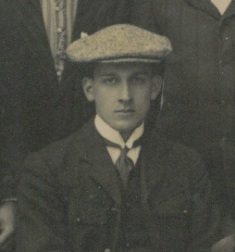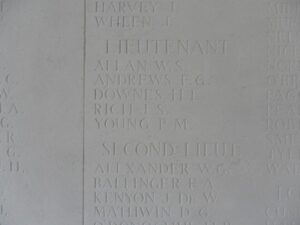Aberystwyth University was founded in 1872 as University College Wales, Aberystwyth. It became a founder member of the University of Wales in 1894, changing its name to the University College of Wales, Aberystwyth. During the Great War a large number of pupils, former pupils and teachers from the University served with the armed forces, many gaining high rank and awards, and many sadly dying as a result of the Great War. These men of the University who fell are commemorated on a fine carved oak panel, which hung at the University. These men are remembered below.
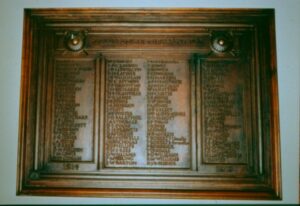
The Great War, 1914-1918
Edwin William Barton, M.A., Second Lieutenant, Lancashire Fusiliers. Edwin was born on 7 November 1891, the son of William J. Barton and Mrs W. A. Barton. He was educated at Swansea Grammar School and at Aberystwyth, passing out in 1912. Edwin enlisted into the Artist’s Rifles in 1915, and was commissioned on 4 June 1916 into the 2/5th Battalion, Lancashire Fusiliers. Edwin remained on home service, and married Marjorie Denne Findley at Manchester on 31 October 1916, the couple setting up home at Nearcloughside Farm, Werneth Low, Gee Cross, Hyde, Cheshire. Edwin became ill soon after, and died in hospital at Manchester on 27 April 1917, aged 25. He is buried at Birch-in-Rusholme (St. James) Churchyard, and is also commemorated on the Screen Wall at Manchester Southern Cemetery.
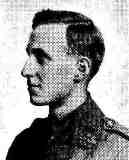
William Charles Beynon, B.A., Second Lieutenant, Royal Welsh Fusiliers. William was born on 23 March 1888, the son of Enoch and Bessie Beynon, of 18, George Street, Swansea. He was educated at Swansea Grammar School and at Aberystwyth, passing out in 1912, becoming Assistant Schoolmaster at Brynmill School, Swansea. He joined the Inns of Court Officer Training Corps in 1915, and was commissioned into the Royal Welsh Fusiliers on 5 September 1916. On 23 February 1917, William was posted to France, where he joined the 2nd Battalion, South Wales Borderers, which was attached to 87 Brigade, 29th Division. William saw his first major action at Monchy-le-Preux, during the Battle of Arras, on 23 April 1917, and was badly wounded. He was evacuated to the Casualty Clearing Station at Etrun, where he died of his wounds on 4 May 1917. William was 29 years old, and is buried at Duisans British Cemetery, Etrun, France. The photograph of William is courtesy of Lieutenant Colonel Nick Lock, OBE, MA.
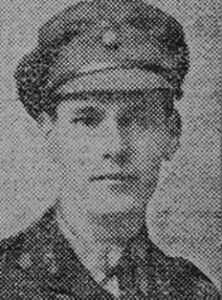
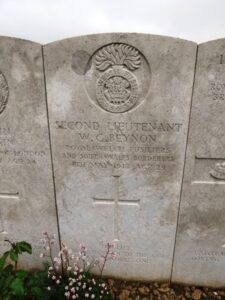
Richard Bowen, Sapper, 197432, Royal Engineers. Richard was the son of John and Mary Bowen, of Pontyates, Carmarthenshire. He was educated at Cardiff and Aberystwyth, and worked as Assistant Master at Aber Council School, Ogmore Vale prior to the war. Richard joined the Royal Welsh Fusiliers soon after the outbreak of war, but since transferred to the 4th Special Brigade of the Royal Engineers, which was a Special (Gas) Company. Richard was wounded in France on 7 May 1917. He was brought back to Warrington Hospital, where he died of his wounds on 5 June 1917. Richard was 28 years old and was buried with full military honours at Pontyates Congregational Chapelyard.
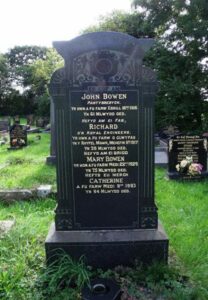
Thomas George Deane Burdett, MC, Captain, Royal Welsh Fusiliers. Thomas was born at Rhyl on 15 February 1881, the son of George Deane Burdett and Claudia H. Deane Burdett. Claudia was from Aberystwyth, and Thomas was educated at Aberystwyth Grammar School, and at the University. He became a solicitor prior to the war, and was commissioned on 2 September 1914 into the 1/7th Battalion, Royal Welsh Fusiliers. The battalion was attached to 158 Brigade, 53rd (Welsh) Division, and landed at Gallipoli on 9 August 1915. Here the Division was immediately thrown into action, and spent the next few days in isolated pockets, fighting against a Turkish counter-attack during the Battle of Sari Bair, then the ensuing Attack on Scimitar Hill. The Division remained here throughout the coming months, and suffered severe losses in manpower strength during the great November 1915 blizzard on Gallipoli, when its total strength was reduced to less than that of a full-strength Brigade. On 11 December 1915 the Division was evacuated to Mudros, and by 23 December 1915 were moved to Egypt. They remained on the Suez Canal Defences for the next twelve months, and in early 1917 moved into Palestine, where they remained for the duration of the war, fighting at the Battles of Gaza, and successfully capturing Jerusalem. Thomas was killed in action during the Third Battle of Gaza, on 6 November 1917. He was 36 years old, and is buried at Beersheba War Cemetery, Israel.
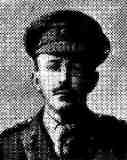
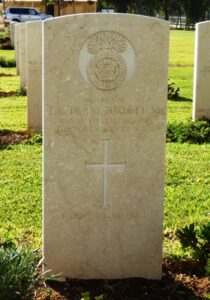
Denis John Bryan Busher, Second Lieutenant, Lincolnshire Regiment. Denis was born at Abergavenny in 1895, the son of Charles and Mary Busher. He was commissioned into the 8th Battalion, Lincolnshire Regiment in 1916. The battalion was attached to 63 Brigade, 37th Division, which had taken part in heavy fighting on the Somme in July 1916. After the Somme offensive had been closed down, the Division settled down for the winter on the Ancre. They moved in March 1917 and took part in the First Battle of the Scarpe, where they captured Monchy le Preux. They then took part in the Second Battle of the Scarpe, and the Battle of Arleux. Denis was killed in action at Arras on 24 April 1917, aged 22, and is commemorated on the Arras Memorial, France.
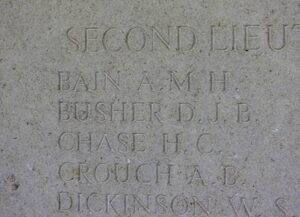
Philip Spencer Chattaway, Second Lieutenant, Cheshire Regiment. Philip was born on 2 June 1896, the son of Frederick Daniel and Elizabeth Chattaway, of 151, Woodstock Road, Oxford. He had been educated at Aberystwyth and Eton prior to the war, and won a Classical Scholarship to Christ Church, Oxford. The outbreak of war put a halt to his education, and on 14 April 1915 Philip was commissioned into the Cheshire Regiment. He was posted to France, where he joined the 6th Battalion, Cheshire Regiment, which was attached to 118 Brigade, 39th Division. The Division moved to France at the end of February 1916, and on 30 June 1916 took part in an attack at Richebourg l’Avoue. The Division moved to the Somme in August 1916, where it fought at the Battle of the Ancre Heights, where they captured the Schwaben Redoubt. Philip was killed in action during the storming of the redoubt, on 14 October 1916. He was 20 years old, and is buried at Lonsdale Cemetery, Authille, France.
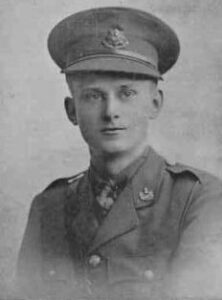
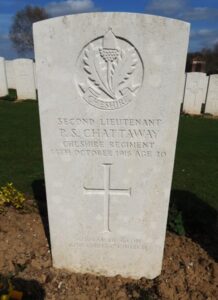
David Brynmor Chiles-Evans, DSO, MRCS, LRCP, Lieutenant-Colonel, Royal Army Medical Corps. David was the son of David and Elizabeth Evans, of 2, Goring Villas, Burry Port. He was a regular soldier, and at the outbreak of war was the Medical Officer of the 1st Battalion, West Yorkshire Regiment, which was attached to 18 Brigade, 6th Division. On 10 September 1914 the Division landed at St Nazaire, before moving to reinforce the BEF on the Aisne, before the whole army was moved north into Flanders. Here they took part in the Action of Hooge during June 1915. David was the medical Officer that examined the detainee Private Harry Farr of the 1st West York’s early in 1916, after he had twice been treated for being ‘nervy’. Harry was subsequently executed for Cowardice, a sentence which has only in recent years been rescinded, and a full pardon given him. In 1916 the Division were on the Somme, and David was wounded here, at Ginchy, on 17 September 1916 but returned to duty. The following year saw the Division at Arras, where they fought at the Battle of Hill 70. David was killed during this time, on 23 April 1917. He was 40 years old, and is buried at Bethune Town Cemetery, France.
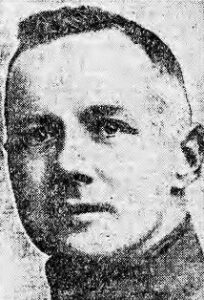
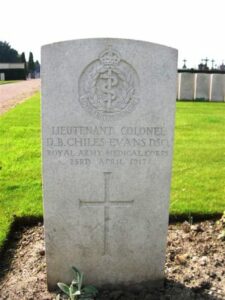
Hubert Harrington Coram, Company Quartermaster Sergeant, 2573, Gloucestershire Regiment. Hubert was the son of Herbert Adamson Coram and Annie Adamson Coram, of Bristol. He had been educated at Bristol Grammar School and Aberystwyth University. Hubert married Clara Ellen Perry in 1915, of 81, Cotham Brow, Cotham, Bristol. Hubert served as Company Quartermaster Sergeant with C Company, 6th Battalion, Gloucestershire Regiment. The battalion was attached to 144 Brigade, 48th (South Midland) Division. The Division moved to France in March 1915, and saw its first major engagement at the opening of the Battle of the Somme, at Gommecourt. They then went into action at the Battle of Bazentin, and captured Ovillers, before taking part in the Battle of Pozieres. The battalion was in the area of Beaumont Hamel when Hubert was killed on 3 September 1916, He was 30 years old, and is buried at Auchonvillers Military Cemetery, France.
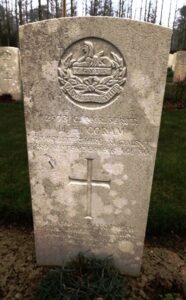
John Handel Curtis, Second Lieutenant, Welsh Regiment. John was the son of James and Phoebe Curtis, of Duffryn Street, Pontlottyn. He was commissioned into the 4th Battalion, Welsh Regiment, and was posted to France with the 18th Battalion, Welsh Regiment. The battalion was attached to 119 Brigade, 40th (Bantam) Division, and moved to France during the first week of June 1916, moving to the front near Loos. Late in 1916 they moved south to the Somme, and fought at the Battle of the Ancre, and remained in the area over the winter. In March 1917 the Germans withdrew to their shortened line, called the Hindenburg Line, and the 40th Division were one of the Divisions that followed the withdrawal. Later in the year they took part in the Battle of Cambrai, playing an important role in the attack on Bourlon Wood. John was killed at Bourlon Wood on 24 November 1917, He was 26 years old, and is commemorated on the Cambrai Memorial, Louverval, France.
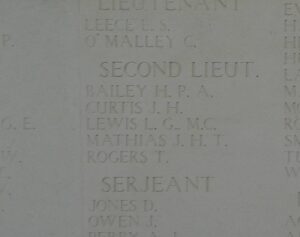
David John Davies, Second Lieutenant, Royal Welsh Fusiliers. David was the son of Owen and Frances Davies, of Ffynongog, Beulah. He had graduated from Aberystwyth University before taking up a teaching post at York, but in 1914 returned to Wales to study in agriculture back at Aberystwyth. He was commissioned into the Royal Welsh Fusiliers in 1915, and posted to the 10th Battalion, RWF which was in France attached to 76 Brigade, 3rd Division. The division moved to the Somme sector in July 1916, in preparation for its part in the assault on Montauban Alley and Pozieres. It saw heavy fighting over the coming weeks, playing a prominent part in the assault on Delville Wood, where the 10th RWF was awarded two Victoria Crosses. The division moved to the Serre sector early in November, and on 13 November the 10th RWF took part in an attack on the Serre trenches, near Mark and Matthew Copse. David was among a number of officers killed during the attack of 13 November 1916. He was 37 years old, and is commemorated on the Thiepval Memorial, France.
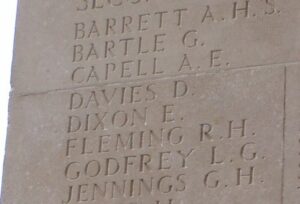
Gwilym Mansel Pritchard Davies, Rifleman, A/204035, London Regiment. Gwilym was the only son of Thomas Rhys Davies and Mag Hopkins Davies, of The Tonn, Llanon, Cardiganshire. The family later moved to Bryn Derwen, Llangadock. Gwilym was educated at Bristol and Aberystwyth Universities, and served for a time as a Certificated Teacher. He enlisted at Neath into the 12th Battalion (The Rangers), the London Regiment, which moved to France in December, 1914. On 8 February 1915 they joined 84 Brigade, 28th Division, and fought at Second Ypres. On 12 February 1916 they moved to become part of 168 Brigade, 56th Division, and fought at Gommecourt, and the Somme Battles of 1916. The Division followed the German withdrawal to the Hindenburg Line in March, 1917 before fighting at the Scarpe during the Arras Offensive. They then fought at Third Ypres and Cambrai, and on 31 January 1918 transferred to 175 Brigade, 58th Division and met the German Spring Offensive in the St. Quentin sector. The Division remained in the area, fighting during the Battles of Villers-Brettoneux and Amiens, when the German offensive was halted. Gwilym was wounded around this period, and Died of Wounds on 24 August 1918, aged 29. He is remembered on the Vis-En-Artois Memorial, France. Gwilym is not commemorated on the memorial.
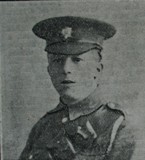
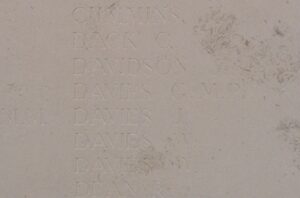
John Davies, Cadet, 175380, Royal Air Force. John was the son of Daniel and Elizabeth Davies, of Pencastell y Farw, Llangeitho. He enlisted into the Royal Air Force in 1918, training as Cadet. John died at RAF Uxbridge on 8 December 1918, aged 19, and is buried at St. Caron Churchyard Extension, Tregaron.
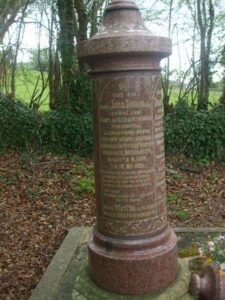
John Llewelyn Davies, Major, Essex Regiment. John was born on 10 September 1879, the son of Mr. and Mrs. D. J. Davies, of Neath. He was educated at Ald. Davies’s School (where his father was headmaster), University College, Aberystwyth, and at Emmanuel College, Cambridge. On leaving Cambridge, John went as lecturer to Carmarthen Training College for a short period, and subsequently became science master at the Perse School, Cambridge. In May 1915, he was appointed headmaster of Cardiff High School. He was commissioned into the Essex Regiment after the outbreak of war, and was posted to France with the 11th Battalion, Cheshire Regiment, which was attached to 71 Brigade, 24th Division. On 30 August 1915 the battalion landed at Boulogne, and proceeded to positions at Loos. John was badly wounded during the opening assault at Loos on 25 September 1915. His obituary states that he died of his wounds in hospital at Wesel, but John has no known grave, and is commemorated on the Loos Memorial, France.
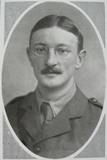
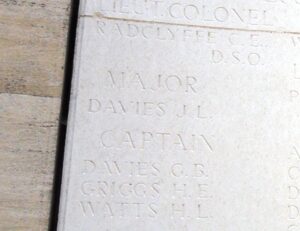
William John Davies, B.Sc., Lieutenant, Royal Garrison Artillery. William was the son of John and Louisa Hughes Davies, of School House, Llangybi. He was educated at Aberystwyth University prior to marrying Jeannie Mephzibah, and the couple set up home at Holmthorpe House, 1, Holmthorpe, Red Hill, Surrey, where William was a Schoolmaster. William enlisted into the Inns of Court OTC, and was commissioned on 12 November 1916, and landed in France on 27 December 1916, joining the 140th Siege Battery, Royal Garrison Artillery. William served with the Battery until being mortally wounded at Arras on 14 October 1918, dying the same day. William was 32 years old, and is buried at Bucqouy Road Cemetery, Ficheux, France.
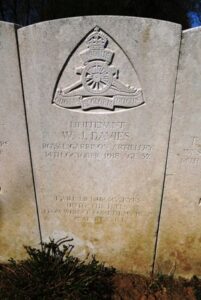
Edward Dickinson, Captain, Yorkshire Regiment. Edward was born at Burnley in 1886, the son of Doctor David Dickinson and Jane Dickinson. He had played football for Aberystwyth Football Club whilst at Aberystwyth University, and was science master at Darlington Technical College prior to the war. Edward enlisted into the Durham Light Infantry at the outbreak of war, and on 24 October 1914 was commissioned into the 11th Battalion, Yorkshire Regiment (The Green Howards). In November he became a full Lieutenant, and on 29 December 1914 was gazetted as Captain. In May 1915 Edward was transferred to the 1st Battalion, Royal Dublin Fusiliers and left England on 25 May 1915 for the Dardanelles with reinforcements. He arrived at Cape Helles on 14 June 1915, joining the battalion, which was attached to 86 Brigade, 29th Division. The battalion had seen heavy fighting since the landings of 25 April 1915. Edward was killed at Gallipoli on 28 June 1915. He was 29 years old, and is commemorated on the Helles Memorial, Gallipoli.
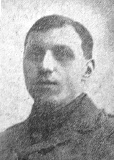
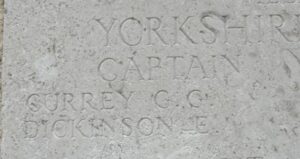
Frederick William Drew, Second Lieutenant, East Yorkshire Regiment. Frederick was the son of Elizabeth Drew, of Bristol, and the husband of Isabel Drew, of Idene, Sandford Road, Mapperley, Nottingham. He was commissioned into the 9th Battalion, East Yorshire Regiment, before being posted to France, and attached to their 7th Battalion, which was attached to 50 Brigade, 17th (Northern) Division. Frederick was killed on the Somme on 5 November 1916, aged 33. He is commemorated on the Thiepval Memorial, France.
Griffith Oliver Edwards, MC, Second Lieutenant, Northumberland Fusiliers. Griffith was born at Hackney in 1895, the son of Richard Oliver Edwards and Mary Anne Edwards, of Corris. He was commissioned from the 28th Battalion, London Regiment (Artists Rifles) into the Northumberland Fusiliers on 5 September 1916. Griffith was posted to France on 26 October 1916, where he joined the 11th Battalion, Northumberland Fusiliers. The battalion had been in France since August 1915, was attached to 68 Brigade, 23rd Division. In May 1917 they took part in the Battle of Messines, before moving further north to Ypres, and took part in the Battle of the Menin Road. Griffith was badly wounded here on 20 September 1917, and was brought back to Ypres, dying that same day. He is buried at Ypres Reservoir Cemetery, Belgium. Griffith had been awarded the Military Cross just prior to his death, for his gallantry at Messines. The award was published in the London Gazette of 17 September 1917, and read; ‘For conspicuous gallantry and devotion to duty in commanding two platoons during an attack. His coolness and cheerfulness under heavy shell fire steadied his men, and later, when sent up to reinforce, he did so with great promptness and exactitude.’
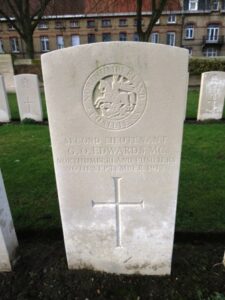
Stanley Edwards, Signalman, Wales/Z/4066, Royal Naval Volunteer Reserve. Stanley was the son of I. W. and Mabel Edwards, of 6, The Terrace, Rhymney, Cardiff. He served with the Royal Navy aboard the destroyer HMS Vehement. On 2 August 1918, Vehement was attached to the 20th Destroyer Flotilla, and was undertaking a mine laying operation in the Heligoland Bight, when she struck a mine. The explosion set off her forward magazine, which blew off her bow. Stanley was killed during the explosion, He was 28 years old, and is commemorated on the Plymouth Naval Memorial, Devon.
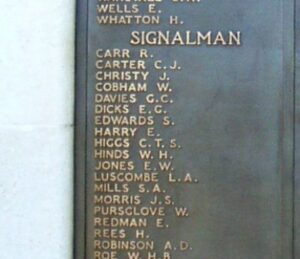
David Edgar Evans, Lieutenant, Welsh Regiment. David was the son of William and Margaret Evans, of Penlan, Pentrepoeth, Morriston, Swansea. He originally served with the Royal Welsh Fusiliers. He was commissioned into the Welsh Regiment, and posted to France in February 1916, joining the 14th Welsh, which was attached to the 38th (Welsh) Division. David was wounded at Mametz Wood on 7 July 1916, and after recovering was posted to Salonika with another battalion of the regiment, probably the 11th Welsh. He was killed in Salonika on 11 September 1918, aged 32, and is commemorated on the Doiran Memorial, Greece.
Evan William Evans, Corporal, 185934, Royal Engineers. Evan resided at Dolgellau prior to the war, and enlisted at Montgomery into the Montgomeryshire Yeomanry. He was subsequently transferred, and posted to France attached to N Special Company, Royal Engineers, which was a gas warfare unit. Evan was at Ypres with his unit when he was killed in action on 14 November 1917. He is buried at Steenkerke Belgian Military Cemetery, Belgium.
John Wynne Evans, Private, 28283, South Wales Borderers. John was born on 29 April 1879, the son of David Evans and Elizabeth Evans (nee Edwards), of Caergwyn, Llangeitho. He was educated at Aberystwyth University, prior to gaining a position as a warehouse manager at a soup works prior to the war, before emigrating to Canada in 1913. John returned to Britain in December 1915 to enlist at Brecon into the South Wales Borderers, and was posted to France in November 1916, joining the 2nd Battalion, South Wales Borderers, which was attached to 87 Brigade, 29th Division. The battalion was still on the Somme, after having suffered terrible losses on 1 July 1916 at Beaumont Hamel. In the Spring of 1917 they fought at the Battle of the Scarpe, which was part of the Arras Offensive, and then moved further north to Ypres. John was killed in action at Langemarck on 16 August 1917, aged 38. He was buried near the ruins of Montemial Farm, by the Steenbeek, by the battalion Chaplain, Reverend Swallow. Sadly his grave was lost, and John is now commemorated on the Tyne Cot Memorial, Belgium.
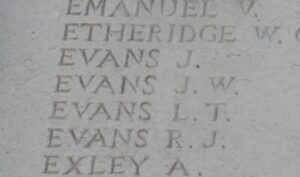
Richard Parry Evans, Second Lieutenant, Royal Welsh Fusiliers. Richard was the son of Moses and Mary Evans, of 1, Waun Wen Terrace, Nantymoel, Bridgend. On 1 March 1917 he was commissioned from the OTC into the Royal Welsh Fusiliers, and was posted to France, joining the 1st Battalion, Royal Welsh Fusiliers, which was attached to 22 Brigade, 7th Division. Richard joined up with the battalion in time to take part in the Battle of Arras. He was killed in action in Bullecourt on 14 May 1917, when he was spotted by a German sniper, and shot dead. Richard was 23 years old, and is buried at Bailleul Road East Cemetery, St. Laurent-Blangy, France.
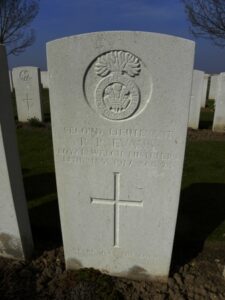
Oswald Henry Feilden, Captain, Leicestershire Regiment. Oswald was born at Borth in 1887 the son of Lt.-Col. Robert and Emily Jane Feilden, of 1, Cambrian Terrace. His parents later resided at Lane End, Hartney, Spilsby, Lincs. Oswald had been educated at Llandovery College from 1898 to 1900, before taking his degree at Aberystwyth. Oswald joined the Leicestershire Territorial’s in 1911, and was commissioned into the 5th Battalion, Leicestershire Regiment on 15 January 1912. The Division had served in Ireland and had been involved in the Easter uprising, before being sent to the Western Front, where they landed in France on 24 February 1917, attached to 177 Brigade, 59th Division. They fought during the German retreat to the Hindenburg Line, and then moved to Ypres. After training around the Vormezeele area in Flanders in early September 1917, Oswald’s Battalion moved to St. Jean near Ypres, to prepare for a major attack which was timed to take place on 26 September. At 05.50 hours on 26 September 1917, the 2/5th Leicester’s, attacked hill 37, taking all its objectives. Oswald was severely wounded in this action and died from his wounds at 46 Casualty Clearing Station, Proven on 29 September 1917, aged 30. Oswald is buried there, at Mendinghem Military Cemetery, Belgium. He is also commemorated on a memorial at St. Matthews Church, Borth.
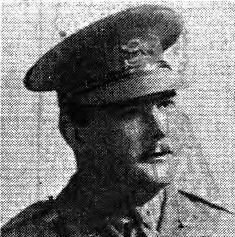
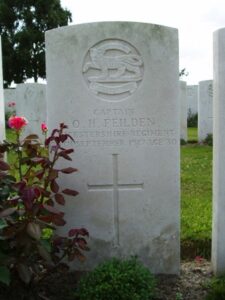
David Herbert Francis, Private, 2499, Notts & Derby (Sherwood Foresters). David was the son of William and Mary Francis, of Maesyffrwd, The Grove, Merthyr Tydfil. He resided at Derby prior to the war, and enlisted there into the army on 8 September 1914. David was posted to the 1/5th Battalion, Sherwood Foresters, which had landed in France on 25 February 1915 as part of the North Midland Division. In May the formation became renumbered, the battalion now being designated as being attached to 139 Brigade, 46th (North Midland) Division, and was situated at Ypres. David was killed in action soon after, on 26 June 1915, aged 24. He is buried at Sanctuary Wood Cemetery, Belgium.
Thomas George, Second Lieutenant, Royal Welsh Fusiliers. Thomas was the son of John and Lettice George, of Brynhir, Pembrey, Carmarthenshire. He had been commissioned into the 16th Battalion, Royal Welsh Fusiliers, who were attached to 113 Brigade, 38th (Welsh) Division. The Division landed in France during December 1915 and had spent their first winter in the trenches near Armentieres. In June they marched south to the Somme, where they famouslt captured Mametz Wood. The Division suffered terrible casualties at Mametz, and were taken out of the line, and moved to Ypres to rebuild. Here they fought at Pilckem and Langemarck, then moved to Armentieres, where they remained from September 1917 until March, 1918 when the German Spring Offensive was launched. The British had been over-run on the Somme, and so in April the Division was moved south, taking up positions North of Albert, from where they weathered the storm of the coming months, until the war turned during the Battle of Amiens, on 8 August 1918. The Germans had now lost the upper hand, and the 38th Division crossed the flooded River Ancre on 21 August 1918, launching their attack on Thiepval Ridge and Pozieres. Thomas was killed in action just six days into the offensive, near Longueval on 27 August 1918. He was 24 years old, and is buried at Caterpillar Valley Cemetery, Longueval, France.
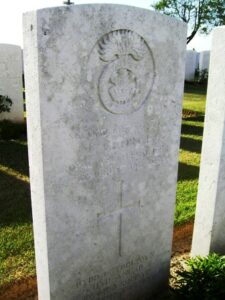
Hugh Slader Glanville, Private, 320299, Welsh Regiment. Hugh was the son of James Cox Slader Glanville and Anna Maria Glanville, of Llanteg. He enlisted at Carmarthen into the Pembroke Yeomanry, with the service number 4286. The Pembroke Yeomanry had formed in Tenby for Home Defence, as part of the South Wales Mounted Brigade. They arrived in Egypt in March 1916, and on 2 February 1917 were disbanded, joining with the Glamorgan Yeomanry to form the 24th Battalion of the Welsh Regiment, as part of 231 Brigade, 74th (Yeomanry) Division. Hugh’s service number then changed to 320299. The Division first saw action during the Second Battle of Gaza. Hugh was wounded during the Third Battle of Gaza, and Died of Wounds on 11 November 1917, aged 26. He is buried at Beersheba War Cemetery, Israel. His brother William Leslie Glanville served alongside him, and at the time of Hugh’s death was wounded and in Hospital at El Arish, Egypt. Fortunately William survived the war.

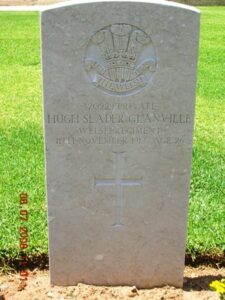
Cyril Mortimer Green, Captain, Royal Sussex Regiment. Cyril was the son of Thomas Mortimer Green and Catherine Green, of Aberystwyth, and the husband of Gwendoline Mortimer Green, of 23, Southwood Court, Golder’s Green, London. Cyril was a native of Denbigh, and had been educated at the University Colleges of Exeter, Carmarthen and Aberystwyth, along with his brother Hugh (see below), before being gazetted as Second Lieutenant into the 2nd Battalion, Royal Sussex Regiment in October 1914. Cyril served in France until he was severely wounded at Festubert on 9 May 1915, and returned home for treatment. Returning to the front, he was attached to the 16th Battalion, Royal Sussex Regiment, who were attached to 230 Brigade, 74th Division. The Division was taking part in the advance into Palestine, and had just successfully fought in the Third Battle of Gaza, when Cyril was killed in action on 6 November 1917. He was 29 years old, and is buried at Beersheba War Cemetery, Israel.
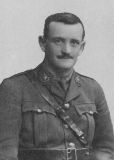
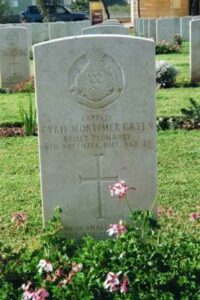
Hugh Mortimer Green, Captain, Welsh Regiment. Hugh was the son of Thomas Mortimer Green and Catherine Green, of Aberystwyth, and the Brother of Cyril Mortimer Green (see above). Hugh was educated at Carmarthen and Aberystwyth Universities along with Cyril, and was gazetted into the Welsh Regiment. He was posted to the 1/4th Battalion, Welsh Regiment, which was the local Territorial Battalion, attached to 159 Brigade, 53rd (Welsh) Division. The Division landed at Cape Helles, Gallipoli, on 9 August 1915, and was immediately thrown into action, spending the next few days in isolated pockets. Hugh was killed in action on 10 August 1915 at the Battle of Sari Bair (Attack on Scimitar Hill). He has no known grave, and so is remembered on the Helles Memorial, Gallipoli.
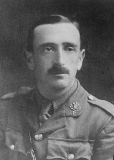
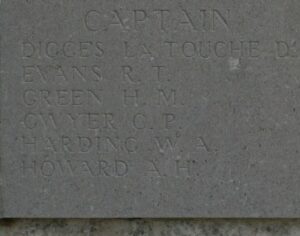
Oswald Robert John Green, Lieutenant, Welsh Regiment. Oswald was the son of William Arthur and Sophia Green, and the husband of Winifred Gwendoline Green, of Buchland House, Neath Abbey, Neath. He was a Holder of the Royal Humane Society Medal for life saving from drowning, and had played football for Aberystwyth Football Club prior to the war. Oswald was commissioned into the 9th Battalion, Welsh Regiment, which was attached to 58 Brigade, 19th (Western) Division. The Division moved to France during July 1915, and moved to positions near Loos, where it took part in the opening attack of the Battle of Loos on 25 September 1915. The following year the Division moved to the Somme, where it took part in the second wave of the attack on Ovillers-La Boiselle on 1 July, capturing the village at heavy cost. The 9th Welsh had played a big part in the taking of Ovillers, but Oswald had been mortally wounded. He died on 5 July 1916, aged 35, as a result of his wounds, and is buried at Heilly Station Cemetery, Mericourt-L’Abbe, France.
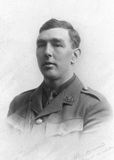
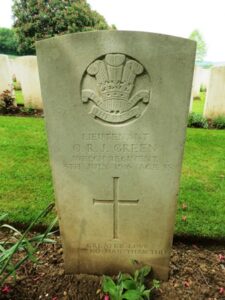
Evan Frederick Griffiths, Private, 356401, King’s Liverpool Regiment. Evan was the son of Rhys Gwilym Griffiths, M.E., and Leah Griffiths, of Arfryn, Pontyberem. Evan had been educated at the University of Wales, Aberystwyth, and had graduated with a B.A. He enlisted at Southport, Cheshire into the 13th Battalion, King’s Liverpool Regiment, which had crossed to France in September 1915 attached to 76 Brigade, 25th Division. Here the Brigade was attached to the 3rd Division, before the Battalion transferred to 8 Brigade, 3rd Division, at Ypres. They took part in actions at Bellewaarde and St. Eloi before moving to 9 Brigade, still with the 3rd Division, and moving to the Somme. Evan was killed in action during the Battle of the Somme, on 16 August 1916. He was 27 years old, and is remembered on the Thiepval Memorial, France.
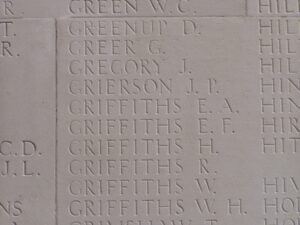
John Llewelyn Griffiths, Second Lieutenant, Northumberland Fusiliers. John was the son of William and Martha Griffiths, of 1, Turberville Road, Mount Pleasant, Porth, Rhondda. He resided at Pontrhydfendigaid prior to the war, and was commissioned into the 15th Battalion, Northumberland Fusiliers. John was posted to France where he joined the 12th Battalion, Northumberland Fusiliers, which was attached to 62 Brigade, 21st Division. The Division landed in France between 2 and 13 September 1915, moving to positions at Loos, in reserve, It was sent into action on 26 September, suffering over 3,800 casualties. The Division moved to the Somme in 1916, in readiness for the launch of the Somme offensive on 1 July 1916. John was killed on the Somme during the build up to the battle on 26 June 1916. He was 22 years old, and is buried at Dartmoor Cemetery, Becordel Becourt, France.
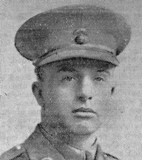
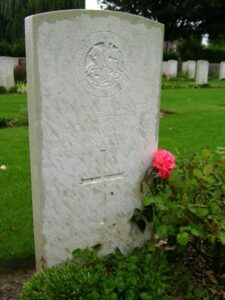
Arthur Gordon Haigh, Second Engineer, Royal Engineers. Arthur was born at Natal on 29 June 1883, the only son of Arthur Harry Haigh, and Mary Browne, of St. Catherine’s, Ontario. He was educated at Aberystwyth University, and at Christ’s College, Cambridge, becoming a Civil Engineer with the London County Council Sewerage, being employed in the construction of the massive new network of sewerage systems under London. Arthur worked on the Canadian Railways prior to the war, and was commissioned into the Royal Engineers on 12 June 1915. Due to his experience in London, Arthur was posted to the 172nd Tunnelling Company, Royal Engineers, at Ypres. The tunnellers were working at the Bluff and St. Eloi mine workings, constructing underground mines beneath the German positions there. Arthur was killed at Ypres on 15 February 1916, aged 30. His obituary states that he was buried at Gordon Terrace Military Cemetery. The cemetery is now called Spoilbank Cemetery. However, at some time Arthur’s grave was lost, and today he is commemorated on the Ypres (Menin Gate) Memorial, Belgium. Arthur is not named on the University memorial.
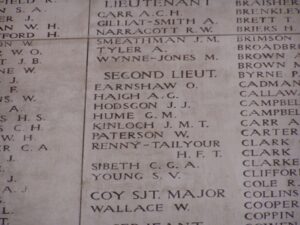
Leonard Holmes Haime, Private, 7553, Honourable Artillery Company. Leonard was born at Cardiff in 1897, the son of Arthur Homes Haime, and Mary Elizabeth Haime (nee Tregaskis). Educated at Somerset and Aberystwyth, Leonard enlisted at Cardiff into the army. He was posted to France in 1916, joining the 2nd Battalion, Honourable Artillery Company, which was attached to 190 Brigade, 63rd (Royal Naval) Division. The Division moved to France, arriving at Marseilles between 12 and 23 May 1916 and moved to positions on the Somme, where it took part in the Battle of the Ancre, and the resulting Operations on the Ancre. In April 1917 the Division were at Arras, and fought at the Second Battle of the Scarpe, where they captured Gavrelle. They then fought at the Battle of Arleux, and it was here that Leonard was killed on 3 May 1917, He was 19 years old, and is commemorated on the Arras Memorial, France.
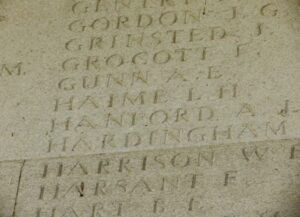
Eric Guy Harries, Captain, Royal Welsh Fusiliers. Eric was born on 30 October 1892, the son of Mr. Thomas Davies and Annette Martha Harries, of Grosvenor House, Aberystwyth. He was an engineer at the Cambrian Railway Works at Oswestry prior to the war, and was commissioned into the 1/7th Battalion, Royal Welsh Fusiliers on 1 April 1913. At the outbreak of war the battalion became attached to 158 Brigade, 53rd (Welsh) Division. The Division landed at Cape Helles, Gallipoli, on 9 August 1915, and was immediately thrown into action, spending the next few days in isolated pockets, fighting against a Turkish counter-attack during the Battle of Sari Bair. Eric was wounded on Chocolate Hill on 10 August 1915, and was evacuated aboard the SS Euripides. He died aboard her on the way to Mudros on 17 August 1915, aged 22. Eric was buried ashore, at East Mudros Military Cemetery, Greece.
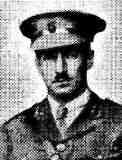
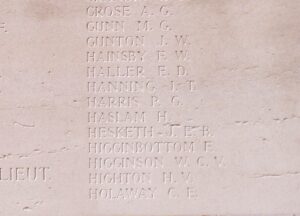
Percy George Sefton Harries, 2nd Lieutenant, Royal Flying Corps. Percy was born in 1891, the son of Herbert J and Elizabeth Harris, of 14, Percy Road, Wrexham. He originally enlisted into the 17th Battalion, Royal Welsh Fusiliers, which was attached to 115 Brigade, 38th (Welsh) Division, landing in France with the battalion on 1 December 1915, Percy fought at Mametz Wood the following year, and on 20 November 1916 was commissioned as a Second Lieutenant with the battalion. He subsequently transferred to the Royal Flying Corps, and was posted to 21 Squadron, Royal Flying Corps as an Observer. By the time Percy joined the Squadron, it was at Ypres, equipped with the R.E.8., and was performing artillery ranging duties. On 7 June 1917, during the opening day of the Battle of Messines, its artillery spotting was responsible on one day for putting 72 German batteries out of action. On 11 August 1917, Percy was flying as observer aboard an R.E.8., Serial A3863, piloted by Second Lieutenant C.E. Holloway, when their aircraft was attacked by German fighters over Zonnebeke, and crashed to earth at 19.10, after being shot down by Leutnant T. Quant, of Jasta 36. Both Percy and his pilot were killed in the crash. Percy was 26 years old, and is commemorated on the Arras Flying Services Memorial, France.
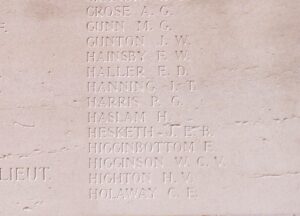
Arthur Frank Newman Henstock, MC, Captain, Notts & Derby (Sherwood Foresters). Arthur was born at Eastbourne in 1892, the son of Thomas and Catherine Henstock. He was commissioned into the Sherwood Foresters, and posted to France on 25 August 1916, where he joined the 15th Battalion, Sherwood Foresters, which was attached to 105 Brigade, 35th Division. The Division moved to France in late January 1916, and saw its first major action during the Battle of the Somme. After being taken out of the line to re-equip, the Division went back into the line, and followed the German Retreat to the Hindenburg Line in March 1917. Later in the year they moved north to Ypres, and fought at the Second Battle of Passchendaele. By Spring of 1918 they were back on the Somme, and fought at the First Battle of Bapaume, during the German Offensive. Arthur was reported as missing, believed killed in action here on 22 March 1918. He was 25 years old, and is commemorated on the Pozieres Memorial, France. Arthur had been awarded the Military Cross during the war.
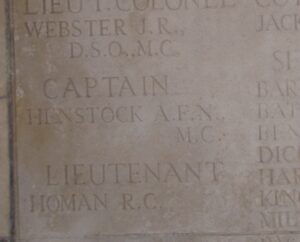
Alfred James Hinxman, Lieutenant, Wiltshire Regiment. Alfred was born at Devizes, Wiltshire in 1893, the son of Alfred and Emma Hinxman, of 146, Fisherton Street, Salisbury. After receiving his education at Aberystwyth, Alfred was commissioned into the 5th Battalion, Wiltshire Regiment, which had formed at Devizes in August 1914, as part of the 13th Division. The battalion sailed from Avonmouth with the Division, for the Mediterranean on 1 July 1915, and moved to Mudros before being landed at Cape Helles, Gallipoli on 6 July 1915, relieving the 29th Division. They left and returned to Mudros at the end of the month, and the entire Division landed at ANZAC Cove from 3 August 1915, taking part in heavy fighting in the coming days. Alfred was reported as missing, presumed killed in action, on 10 August 1915. He was 21 years old, and is commemorated on the Helles Memorial, Gallipoli.
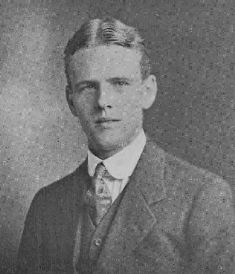
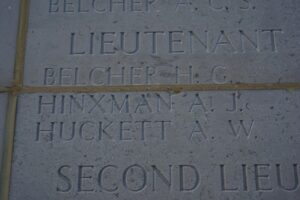
Arthur Emlyn Hopkins, MC, Captain, East Lancashire Regiment. Arthur was the son of John and Annie Hopkins, of Wellington House, Trealaw, Rhondda. He was commissioned into the East Lancashire Regiment, and served with the 2/5th Battalion, East Lancashire Regiment, which was attached to 126 Brigade, 42nd (East Lancashire) Division. The Division had served at Gallipoli in 1915, and had spent 1916 in Egypt. It moved to the Western Front in February 1917, taking over the line near Epehy then Havrincourt. In September the Division moved north to Ypres, and fought through Third Ypres, until moving to the Coast in September to refit. November 1917 saw them moving to positions at Givenchy, where they remained until moving back south in early 1918. On 21 March 1918 the Germans launched a mass attack on the Somme, which was pre-empted by specialist storm-trooper units. Arthur was killed in action during desperate fighting that day. He was 21 years old, and is commemorated on the Pozieres Memorial, France.
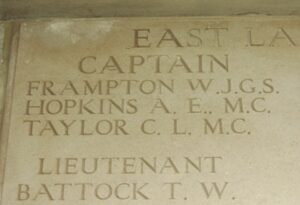
Evan Idris Howell, Lieutenant, Royal Air Force. Evan was the son of Benjamin and Annie Howell, of 17, Ebenezer Terrace, Rhydyfelin, Pontypridd. He was a schoolteacher prior to the war, and was commissioned into the Northamptonshire Regiment from the OTC on 12 July 1915. Evan had served in France with the Dorsetshire Regiment from 29 August 1916, but had volunteered to train as a pilot, and was posted to the 72nd Training Squadron, Royal Air Force, which was based at Beverley, Yorkshire. On 21 April 1918, Evan was had almost qualified as a pilot, and was taking part in a solo flight over the airfield when his aircraft collided with another machine, which was flown by a pilot under instruction. Both aircraft fell to the ground, killing Evan and the two men in the other aircraft. Evan was 25 years old, and is buried at Pontypridd (Glyntaff) Cemetery.
Philip George Herbert Howells, Second Lieutenant, North Staffordshire Regiment. Philip was born at Burton-on-Trent in 1897, the son of Phillip Henry Howells and Blanche Howells (nee Weeks). His mother was from Brynmawr, and by 1911 the family had moved back to her native home, to 16, Alma Street, Brynmawr. Philip was educated at Aberystwyth University where he became a member of the OTC, and before graduating enlisted into the army and was commissioned as Second Lieutenant into the 10th Battalion, North Staffordshire Regiment on 27 September 1915, joining the battalion at Darlington. In November 1915 the battalion moved to Rugeley, Cannock Chase to join the 1st Reserve Brigade. Philip was drafted to France on 3 September 1916, joining the 8th Battalion, North Staffordshire Regiment, which was in positions near Dranoutre, refitting following heavy losses on the Somme, and was attached to 57 Brigade, 19th (Western) Division. At the beginning of October the division, now fully rebuilt, moved back to the Somme sector, to take part in the latter phases of the Somme offensive, and by 20 October had reached Albert. The 8th North Staffs moved into the Stuff Redoubt trenches on 24 October and were not relieved until 1 November. The battalion had a relatively quiet next few weeks, before entering the line at Regina Trench on 18 November 1916 and launched an assault upon Desire Trench. Conditions were terrible, with fresh snow covering the ground, and the battalion suffered severe casualties before the survivors withdrew back to their own lines. Philip was posted as missing during the fighting that day and was later deemed to have been killed in action. The 20-year-old is buried in Grandcourt Road Cemetery, Grandcourt, France.
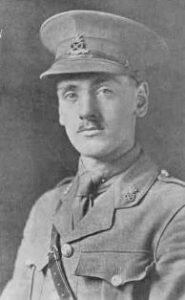
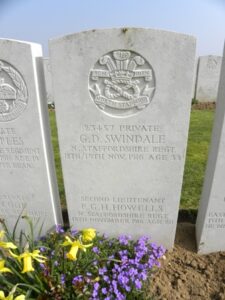
William John Howells, Captain, Welsh Regiment. William was born in White Lion Farm, Eglwys Cummin, in 1888. He resided with his Grandfather, Ben John of Brook, Laugharne prior to being educated at Tremoilet School and Whitland Grammar School, before gaining a BA with Honours at Aberystwyth University. William worked at Lampeter University prior to the war. He enlisted into the Welsh Regiment at the outbreak of hostilities, and was commissioned into the 8th Battalion, Welsh Regiment, which had formed at Cardiff during August 1914 attached to 40 Brigade, 13th Western Division. The Division assembled at Salisbury Plain, and in June 1915 moved to the Mediterranean. On 4 July 1915 the Division landed on Cape Helles and relieved the 29th Division. From there, the Division took part in several actions, most notably The Battle of Sari Bair. The Battalion War Diary for the period from 8 August 1915 shows that they had moved up to positions around Chunuk Bair, in support of the Gloucester’s and the Wellington Battalion. The fighting was ferocious and the diary shows that on that one day, the 8th Welsh suffered four officers and four other ranks killed, nine officers and 154 other ranks wounded, and four officers and 266 other ranks missing. William was among the wounded. He was evacuated from Gallipoli, but died of his wounds on 10 August 1915 aboard the Hospital Ship HMHS Valdivia. William was buried at sea, so he is commemorated on the Helles Memorial, Turkey.
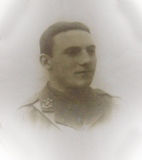
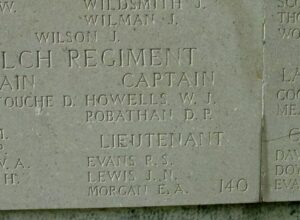
Vivian Gwynne James, Lieutenant, Royal Welsh Fusiliers. Vivian was the son of Lewis and Sarah James, of Min-y-Gaer, Cambridge Street, Barry, Cardiff. After graduating from Aberystwyth, Vivian became Assistant Science Master at Callington, and resided there with his wife, Letitia Louise James. Vivian was commissioned into the 12th Battalion, Royal Welsh Fusiliers, before being posted to Gallipoli, joining the 1/7th Battalion, Royal Welsh Fusiliers, which was attached to 158 Brigade, 53rd (Welsh) Division. On 11 December 1915 the Division was evacuated to Mudros, and by 23 December 1915 were moved to Egypt. They remained on the Suez Canal Defences for the next twelve months, where it took part in operations against the Sultan of Darfur, and in March 1917 took part in the advance into Palestine. Vivian was killed in action here on 26 March 1917, during the First Battle of Gaza. He was 28 years old, and is commemorated on the Jerusalem Memorial, Israel. The photograph of Vivian is courtesy of Lieutenant Colonel Nick Lock, OBE, MA.
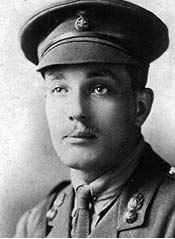
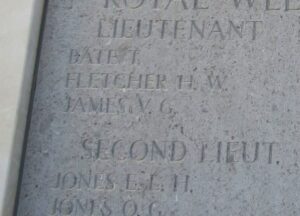
Wilfred Sydney James, Second Lieutenant, Royal Welsh Fusiliers. Wilfred was the son of Thomas Rees James and Margaret James, of Trebeddod House, Stradey Road, Furnace. He had been educated at Aberystwyth University before being commissioned into the 19th Battalion, Royal Welsh Fusiliers, which was attached to 119 Brigade, 40th (Bantam) Division. The Division moved to France between the 1 and 9 June, and moved to the front near Loos. Late in 1916 they moved south to the Somme, and fought at the Battle of the Ancre, and remained in the area over the winter. In March 1917 the Germans withdrew to their shortened line, called the Hindenburg Line, and the 40th Division were one of the Divisions that followed the withdrawal. Later in the year they took part in the Battle of Cambrai, playing an important role in the attack on Bourlon Wood. Wilfred was killed here on 24 November 1917. He was 21 years old, and is commemorated on the Cambrai Memorial, Louverval, France.
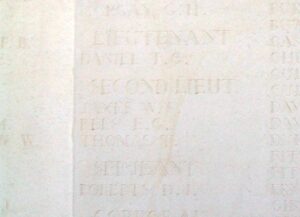
William James, Pioneer, 159319, Royal Engineers. William was the son of David and Mary James, of 17, Pencae, Taliesin. He originally enlisted at Aberystwyth into the South Wales Borderers, but was transferred to the 5th Battalion Special Brigade, Royal Engineers, which was a Special (Gas) Company. The Battalion was a Stokes mortar unit, attached to the Fourth Army. The Battalion was on the Somme in the summer of 1916, where it was to provide support for the forthcoming Battle of the Somme. William was killed on 27 June 1916 during the build up to the battle, probably whilst moving equipment into place. He was 22 years old, and is buried at Hebuterne Military Cemetery, France.
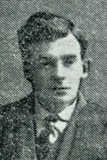
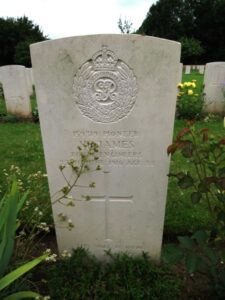
Owen Jenkins, Lance Corporal, 35538, Machine Gun Corps. Owen was born at Llangennech, the son of John and Mary Jenkins. The family later moved to Cwyn-yr-Awel, Gowerton, Swansea. Owen had gained his B.A. at Aberystwyth, and was a Master at Abertillery prior to the war. Owen had enlisted at Abertillery on 10 December 1915 into the Royal Welsh Fusiliers. On 31 July 1916 Owen sailed to France, and was posted to the 15th Company, Machine Gun Corps, which was attached to the 5th Division. The Division was on the Somme in the summer of 1916, and it was here, during the Battle of Guillemont, that Owen was killed on 5 September 1916, aged 30. He is buried at Delville Wood Cemetery, Longueval, France, in Grave XXIV. K. 2. His brothers Oswald and Gwyn were also educated at Aberystwyth, and were commissioned as officers during the war.
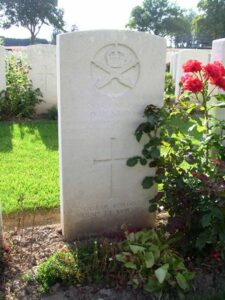
Griffith Brynarfryn John, Corporal, 106504, Royal Engineers. Griffith was the third son of John and Catherine John, of Glanllwchwr House, Llangennech. He was educated at Aberystwyth University before gaining his BSc at London, and became a teacher at Colne Secondary School. Griffith then joined the staff at Slough Secondary School in 1912, where he was Science Master. On 15 August 1915 Griffith enlisted at Chatham into the Royal Engineers, and landed in France on 17 August 1915 with the 187th Special Company, Royal Engineers, one of the specialists in gas warfare. He was wounded soon after and returned to England on 27 October 1915. Griffith was discharged on medical grounds, and took up a post as a chemist at Fields Munitions Works, at Rainham, Essex. On 14 September 1916 a fire set off a store of explosives in the works, which in turn caused the release of poison gas. Griffith was killed that day while attempting to save the lives of four women workers who had been trapped inside the works. Griffith is not commemorated by the CWGC, as he was a civilian worker at the time of his death, and civilian casualties from the Great War are not commemorated as war dead.
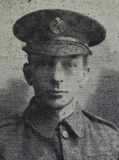
Harold Thomas Johns, Second Lieutenant, Welsh Regiment. Harold was born in 1882, the son of William and Caroline John, of 29, High Street, Troedrhiwfuwch. He was educated at Gelligaer and Pengam Schools, before gaining a scholarship to study at Aberystwyth University from 1900. He possibly went overseas to work, before returning to Britain in November 1914, and was commissioned into the 9th Battalion, Welsh Regiment on 13 March 1915. Harold was later posted to the 8th Battalion, Welsh Regiment, which was in Mesopotamia, attached to the 13th (Western) Division. During January 1917 the 8th Welsh were given the task of sapping trenches towards the Turkish positions in the Hai Triangle, as part of a larger scale offensive there, when Harold was killed on 11 January 1917, aged 35. He is commemorated on the Basra Memorial, Iraq.
Caradog Jones, Private, 267994, Royal Welsh Fusiliers. Caradog was born on 31 July 1899, the son of Elizabeth Jones, of 13, Tanyrallt Terrace, Blaenau Ffestiniog. He enlisted at Ffestiniog on 8 March 1915 into the 17th Battalion, Royal Welsh Fusiliers. Caradog was then transferred to the 20th RWF, before landing in France on 25 June 1916 as a reinforcement to the 16th RWF. He was posted home after having been found to be underage, but in the meantime fought at Mametz Wood. In the summer of 1917 He was posted to Mesopotamia, joining the 8th RWF, which was attached to the 13th (Western) Division. He served there until taking ill, and died of malaria on 3 August 1918, aged 19. Caradog is buried in Baghdad (North Gate) War Cemetery, Iraq.
Clifford Jones, Lieutenant, Royal Welsh Fusiliers. Clifford was born in Whitland, the only son of Rev. Daniel Jones (Baptist Minister, Whitland) and Mrs. Elizabeth Ann Jones, of Bodlondeb, Whitland. Clifford was an Honours Graduate of Wales and Oxon, and was commissioned into the 15th (London Welsh) Battalion, Royal Welsh Fusiliers, which formed part of the 113 Brigade, 38th (Welsh) Division. The Division embarked for France from Folkestone on 5 December 1915, disembarking at Boulogne the same day. During the winter and spring of 1916 the Battalion held the line in the Armentières sector, and at the end of May, 1916 moved South with the remainder of the 38th (Welsh) Division to the Somme area, in readiness for the First Battle of The Somme. After surviving the Battle of Mametz Wood, Clifford moved with the Battalion to reserve in the Ypres sector, and the Division didn’t fight again for almost twelve months, until they were brought into the line north of Ypres, tasked with the taking of the village and strongpoint of Pilckem. Clifford was Killed in Action three days into the Battle of Pilckem, on 2 August, 1917, aged 25. He is commemorated on the Menin Gate Memorial.
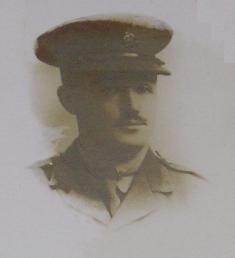
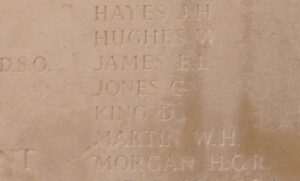
Daniel Thomas Jones, Second Lieutenant, Royal Welsh Fusiliers. Daniel was commissioned into the Royal Welsh Fusiliers, and was posted to France where he became attached to the 1st Battalion, Royal Welsh Fusiliers. The battalion had been in France since 7 October 1914, attached to 22 Brigade, 7th Division, and had fought during the First Battle of Ypres. In March 1915 the Division fought at the Battle of Neuve Chappelle, and during May at the Battle of Aubers Ridge, and at Festubert, before taking part in the Battle of Loos in September. In the summer of 1916, the Division was on the Somme, and took part in the Battle of Albert, where they captured Mametz, one of the few successes of 1 July 1916. They then fought at the Battle of Bazentin, and the Attacks on High Wood. The Division then took part in the Battle of Delville Wood, and the Battle of Guillemont, before spending the winter on the Ancre. In March 1917 they followed up the German Retreat to the Hindenburg Line, and took part in Flanking Operations Round Bullecourt, alongside the Australians. Daniel was killed in action at Bullecourt on 4 May 1917, He is commemorated on the Arras Memorial, France.
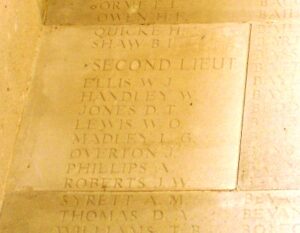
David Jones, Captain, Welsh Regiment. David was the son of Thomas and Margaret Jane Jones, of Wern Isaf, Llanddewi Brefi. He was a member of the OTC at Aberystwyth, and joined the army straight from University, being commissioned into the 10th Battalion, Welsh Regiment. The Battalion, which was known as the 1st Rhondda Battalion, was attached to 114 Brigade, 38th (Welsh) Division. On 2 December 1915 the battalion moved to France, and the entire Division moved to the Fleurbaix sector, where it was initiated into trench warfare. During June 1916 the Division marched south to the Somme, and on 7 July 1916 attacked Mametz Wood. The initial attack failed, and it was three days later, on 10 July, that a fresh attack was mounted. After two days of heavy hand to hand fighting within the wood, the Germans withdrew. David was killed on 12 July 1916, during the withdrawal from the wood. He was 23 years old, and is commemorated on the Thiepval Memorial, France.
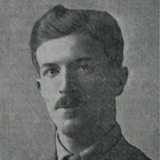
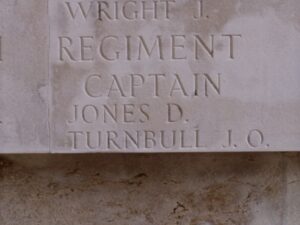
Edwin Griffiths Jones, Private, 22360, Royal Welsh Fusiliers. Edwin was born in 1884, the son of John and Susannah Jones, of Aberystwyth. Prior to the war he resided with his wife, Lily Jones, at 2, Llican Terrace, Great Orme, Llandudno. He enlisted at Aberystwyth into the 15th Battalion, Royal Welsh Fusiliers. The battalion was attached to 113 Brigade, 38th (Welsh) Division, and landed in France on 2 December 1915, moving to the Fleurbaix sector, where it was initiated into trench warfare. On 7 May 1916, a party of the 15th RWF was detailed to raid the German trenches at Fauqissart, and that night the men, armed with clubs, knives and rifles, crossed No Man’s Land into the German lines, killing around 50 Germans, and capturing several prisoners. Edwin was wounded during the raid, and was helped back to the Welshmen’s lines. He was evacuated to Hospital at Merville where he died on 8 May 1916. Edwin is buried at Merville Communal Cemetery, France.
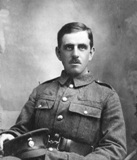
Evan Brindle Jones, Captain, Royal Welsh Fusiliers. Evan was the son of John Evan Jones and Lydia Brindle Jones, of Bradford House, Llangefni. He had played football for Aberystwyth, prior to joining the army, and was commissioned into the 19th Battalion, Royal Welsh Fusiliers, The battalion moved to France in June 1916 attached to 119 Brigade, 40th (Bantam) Division, and moved to the front near Loos. Late in 1916 they moved south to the Somme, and fought at the Battle of the Ancre, remaining in the area over the winter. In March 1917 the Germans withdrew to the Hindenburg Line, and the 40th Division was one of the Divisions that followed the withdrawal. Later in the year they took part in the Battle of Cambrai, playing an important role in the attack on Bourlon Wood. They remained in the area over the coming months, but were caught here by the German Spring Offensive of 21 March 1918, and saw terrible fighting over the coming days. Evan was wounded early in 1918, and was evacuated to England for treatment. He died of his wounds on 10 November 1918, aged 25, and is buried at Llangefni Cemetery.
Evan Lewis Jones, Second Lieutenant, Machine Gun Corps. Evan was the son of Benjamin and Elizabeth Jones, of Gofynachfawr, Llanarth. He was commissioned into the 10th Battalion, North Staffordshire Regiment, and was posted to the 76th Brigade, Machine Gun Corps, which was attached to the 3rd Division. The Division had been one of the first in France. They took part in the famous Christmas Truce on 25 December 1914 and remained at Ypres throughout the winter. In 1915 the Division saw action at Bellewaarde and Hooge, and took part in the Second attack on Bellewaarde, and in 1916 fought at the Actions of the Bluff, and at the St Eloi Craters. They were then moved south to the Somme, and fought there at the Battle of Albert, and the Battle of Bazentin, where they captured Longueval. They then took part in the Battle of Delville Wood, and the Battle of the Ancre, before settling into another bleak winter in France. Evan was killed on the Somme on 13 November 1916. He was 24 years old, and is buried at Bertrancourt Military Cemetery, France.
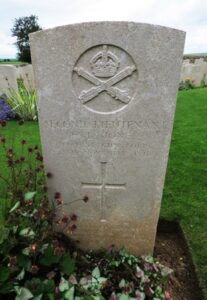
George William Jones, Second Lieutenant, South Wales Borderers. George was the son of William and Anne Jones, of Dowlais, Glamorgan. He was commissioned into the 6th Battalion, South Wales Borderers, which was the Pioneer Battalion, 25th Division. On 25 September 1915 the battalion landed at Havre, and moved to the Vimy area, where they defended Vimy Ridge against a German attack in May 1916. George was killed in action here, during his first major action, on 15 May 1916, aged 24. George is buried at Ecoivres Military Cemetery, Mont-St-Eloi, France.
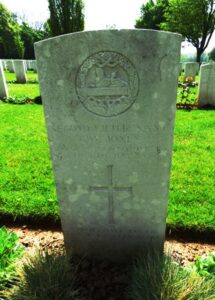
Glyn Jones, Private, 44341, Suffolk Regiment. Glyn was born at Dunvant on 11 February 1894, and was educated at Gowerton before taking his degree at Aberystwyth. He worked as a chemist for the Government and for Chance & Hunt, at Oldbury, prior to enlisting into the North Staffordshire Regiment after marrying Hilda Jones, of Belmont, Gowerton, Swansea. Glyn was posted to France in 1918, joining the 2nd Battalion, Suffolk Regiment, which was attached to76 Brigade, 3rd Division. He took part in the great offensive towards the Hindenburg Line from August 1918, and was killed near the Canal du Nord on 1 October 1918, aged 24. Glyn is commemorated on the Vis-En-Artois Memorial, France.
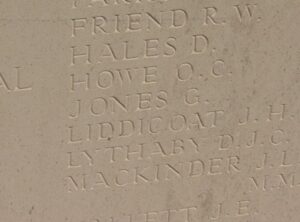
Harold Madoc Jones, MID, Lieutenant, Royal Welsh Fusiliers. Harold was the son of John Roberts Jones, J.P. of Bodfeirig, Anglesey, and Eunice Martha Jones. He was educated at Christ’s College, Brecon and Aberystwyth, before becoming a teacher at Cardigan School, lodging at 2, Park Terrace, Cardigan. Harold originally enlisted into the Royal Welsh Fusiliers as a Private, but was commissioned into the 17th Battalion, Royal Welsh Fusiliers on 18 March 1915. The battalion was attached to 115 Brigade, 38th (Welsh) Division. On 4 December 1915 the battalion moved to France, and the entire Division moved to the Fleurbaix sector, where it was initiated into trench warfare. During June 1916 the Division marched south to the Somme, and on 7 July 1916 attacked Mametz Wood. The initial attack failed, and it was three days later, on 10 July, that a fresh attack was mounted. After two days of heavy hand to hand fighting within the wood, the Germans withdrew, and the battered Welshmen moved via Hebuterne to Boesinghe, on the Yser Canal, where it remained until launching its attack on Pilckem Ridge on 31 July 1917. Harold was killed at Pilckem on 31 July 1917. He was 38 years old, and is commemorated on the Ypres (Menin Gate) Memorial, Belgium. Harold had been Mentioned in Despatches for his bravery twice during the war. The photograph of Harold is courtesy of Lieutenant Colonel Nick Lock, OBE, MA.
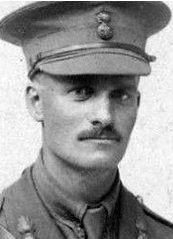
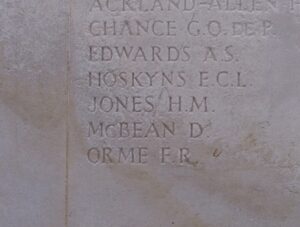
James Brinley Jones, Lieutenant, Welsh Regiment. James was born at Aberdare on 29 September 1890, the son of John Jones. After receiving his education at Aberdare School and at Aberystwyth, James became prominent in the field of Geology in Wales. He married Evelyn Gertrude at Cardiff after the outbreak of war, and the couple had a son, born 26 August 1915. James was commissioned into the Welsh Regiment on 9 November 1915, and was posted to the 10th Battalion, Welsh Regiment, where he became the Battalion Machine Gun Officer. The Battalion was attached to 114 Brigade, 38th (Welsh) Division. On 2 December 1915 the battalion moved to France, and the entire Division moved to the Fleurbaix sector, where it was initiated into trench warfare. During June 1916 the Division marched south to the Somme, and on 7 July 1916 attacked Mametz Wood. The initial attack failed, and it was three days later, on 10 July, that a fresh attack was mounted. After two days of heavy hand to hand fighting within the wood, the Germans withdrew, and the battered Welshmen moved via Hebuterne to Boesinghe, on the Yser Canal. On 29 May 1917 the 10th Welsh began work on digging and wiring a new trench in No Man’s Land, in the Lancashire Farm sector. Work continued over the coming nights, under trying conditions. Early in the morning of 31 May 1917, James was killed whilst commanding the party of men at work here. His body was brought back by his men for burial at Essex Farm Cemetery, Belgium. James was 27 years old.

John Arllwyd Jones, B.A., Second Lieutenant, Welsh Regiment. John was born in 1883, the son of David and Elizabeth Jones, of Gyfaellwyd View, Devils Bridge. Prior to the war he became a Teacher at Wrexham County School, and resided with his wife, Winifred Jones, at 56, Alexandra Street, Wrexham. John enlisted at Wrexham into a Training Battalion of the Royal Welsh Fusiliers. He was commissioned into the Welsh Regiment, and landed in France on 6 June 1917, joining the 9th Battalion, Welsh Regiment, which was attached to 58 Brigade, 19th (Western) Division. He joined the battalion at Messines, and fought with them during the latter stages of the Battle of Messines, and at the opening of the Battle of Pilckem Ridge on 31 July 1917. The Division was relieved on the night of 7/8 August, and after a brief rest, moved back into the front line on 11/12 September, taking up positions near Klein Zillebeke. Here the Division geared up in readiness for a planned attack on 20 September, the Battle of the Menin Road. John was killed in action during the opening of the battle, early on 20 September 1917. He was 34 years old, and is commemorated on the Tyne Cot Memorial, Belgium.
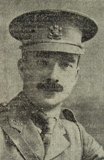
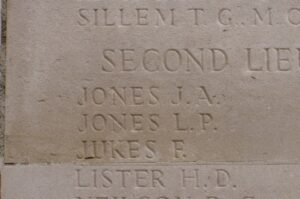
Simon James Jones, Lieutenant, South Lancashire Regiment. Simon was the son of David O. and Elizabeth Jones, of Marffo, Glynarthen, Henllan. He was commissioned into the South Lancashire Regiment, and was posted to France, joining the 2nd Battalion, South Lancashire Regiment. The battalion had been in France since the outbreak of war, attached to 7 Brigade, and on 26 October 1915 was transferred to 64 Brigade, 21st Division. The Division had fought throughout the Somme Offensive in 1916, and in March 1917 followed the German Retreat to the Hindenburg Line. In April the Division fought at Arras and Bullecourt, and later that year fought at the Third Battle of Ypres, and the Battle of Cambrai. The division was one of the units hit by the German Spring Offensive on the Somme in March 1918, fighting at the Battle of St Quentin and the First Battle of Bapaume, before being evacuated to Flanders to rest. Unluckily though, the Germans launched a fresh offensive on the Lys in April 1918, and the division was caught up in the thick of the fighting again, during the Battle of Messines, and the Second Battle of Kemmel. The battered division now moved south to rebuild, but again was unlucky, as the Germans launched a fresh offensive on the Chemin-des-Dames, and the division was caught up in the action again, fighting in the Battle of the Aisne. Simon was badly wounded here, and died on 5 June 1918, aged 24. He is buried at Marfaux British Cemetery, France.
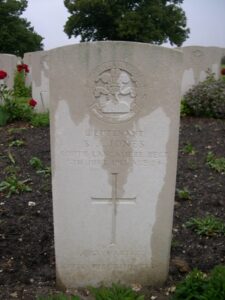
Thomas Phillips Jones, B.A., Private, 27511, South Wales Borderers. Thomas was the son of Evan and Eleanor Jones, of Wellington, New Quay. Prior to the war, he resided with his wife, Ellen C. Jones, at Delfan, 16, Marine Terrace, New Quay. He enlisted at Lampeter into the army, and in 1916 was posted to the 4th Battalion, South Wales Borderers, which was attached to 40 Brigade, 13th (Western) Division. On 12 February 1916 the Division began to move to Mesopotamia, to strengthen the force being assembled for the relief of the besieged garrison at Kut al Amara. By 27 March, the Division had assembled near Sheikh Saad and came under orders of the Tigris Corps, and then took part in the attempts to relieve Kut. The Division then fought at the Battle of Kut al Amara, then at the capture of the Hai Salient and the capture of Dahra Bend. They took part in the passage of the Diyala, in the pursuit of the enemy towards Baghdad. Thomas died in Mesopotamia on 20 November 1916. He was 35 years old, and is buried at Basra War Cemetery, Iraq.
Herbert Burleigh Kelsey, Second Lieutenant, Middlesex Regiment. Herbert was born in 1891, the son of Alfred and Rose Dinah Kelsey, of Coychurch Cottage, Coychurch, Bridgend. He enlisted into the Army Ordnance Corps, and landed in France on 18 August 1915. Herbert was later commissioned into the 12th Battalion, Middlesex Regiment on 4 September 1916, which was attached to 54 Brigade, 18th (Eastern) Division. The battalion had been in France since 25 May 1915, and didn’t see its first major action until July, 1916 when it took part in the Battle of Albert. They then fought at the Battle of Bazentin, where they captured Trones Wood, and moved on to the Battle of Delville Wood. In October they took part in the Battle of the Ancre Heights, and captured Schwaben Redoubt, and helped capture Regina Trench. The Division wintered on the Somme, and it was here, on 17 February 1917, that Herbert was shot and killed, whilst attempting to rescue a fellow officer, who had been wounded in No Man’s Land. Herbert was 25 years old, and is commemorated on the Thiepval Memorial, France.
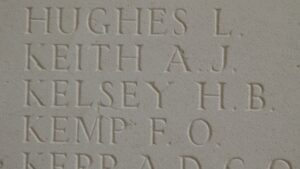
David Jacob Lewis, Second Lieutenant, Royal Fusiliers. David was the son of David and Anne Lewis, of Bronheulog, Llandyssul. He enlisted into the 2nd Battalion, Royal Fusiliers, which were attached to 86 Brigade, 29th Division. The Division moved to Gallipoli via Egypt, landing on 25 April 1915. They remained here until evacuation to Egypt on 11 January 1916 and then moved to the Western Front on 15 March. The Division took part in its first major action in France during the 1916 Somme Offensive, and fought at the Battles of Albert and Le Transloy, suffering heavy casualties. David was killed in action on the Ancre during the winter of 1916/17, on 28 February 1917, aged only 22. His body was lost on the battlefield, and so he is remembered on the Thiepval Memorial, France.
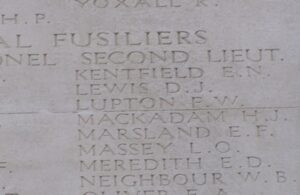
Edward Pugh Lewis, Second Lieutenant, Royal Flying Corps. Edward was born in 1897, the son of Evan and Jane Lewis, of Argoed, Tregynon, Newtown, Montgomery. He was commissioned from the OTC on 20 April 1917 into the Royal Flying Corps, and was posted to the 9th Squadron, Royal Flying Corps in France. On 6 October 1917, Edward was flying in an R.E.8., Serial B5039, artillery spotting over the Ypres battlefield, when a shell hit their aircraft, sending it crashing near the ground. Edward and his pilot, Lieutenant Holt, were killed in the crash. Edward was 20 years old, and is buried at Mendinghem Military Cemetery, Belgium.
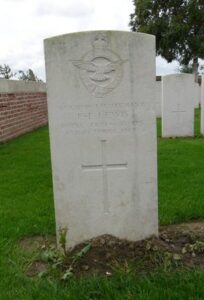
John Emrys Lewis, Second Lieutenant, Somerset Light Infantry. John was born in 1891, the son of Jenkin and Mary Anne Lewis, of Rhiwmynach, Devils Bridge. He was a Teacher prior to the war, and was commissioned into the Somerset Light Infantry. John landed in France on 20 May 1916, and proceeded to join the 8th Battalion, Somerset Light Infantry, which was attached to 63 Brigade, 21st Division. John joined the battalion on the Somme, where it was preparing for its part in the forthcoming offensive of 1 July 1916. The 21st Division moved into positions near Fricourt, with the 8th Somerset Light Infantry being allotted a section of the line opposite Empress Trench, north of Fricourt. At 06.30 on 1 July 1916, amidst the noise of huge underground mines being blown beneath the German lines, whistles blew, and the British climbed out of their trenches. The Somersets took their objectives, but had suffered heavily whilst doing so, coming under intense German machine-gun fire. John had been killed in the early charge that morning. He was 24 years old, and is today buried at Gordon Dump Cemetery, Ovillers-La Boiselle, France. His brother, David, had been killed at Cuinchy on 18 February 1916.
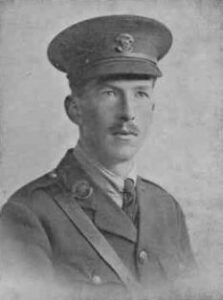
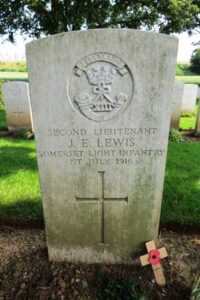
Percy Lewis, Private, 4352, Royal Welsh Fusiliers. Percy was the son of John and Jane Lewis, of Milford House, Machynlleth. He resided at Slough prior to the war, and enlisted at London into the army, being posted to the 3/7th Battalion, Royal Welsh Fusiliers. The battalion had formed in June 1915 as reserve units. Percy was on home service when he took ill, and was invalided to the Isolation Hospital, at Chester. He died there on 3 May 1916, aged 34, and is buried at Machynlleth Nonconformist Cemetery.
Oscar William David Leyshon, Private, 48900, Royal Army Medical Corps. Oscar was the son of William Thomas Leyshon (Solicitor) and Rhianedd Leyshon, of Danygraig House, Pontypridd. He enlisted at Aberystwyth into the 131st Field Ambulance, Royal Army Medical Corps, which was attached to the 38th (Welsh) Division. The Division had moved to France in December 1915, and the following year fought at Mametz Wood. In July 1917 the Division made its famous attack on Pilckem Ridge, before taking part in the ensuing Battle of Langemarck. The Division was posted to the Armentieres sector at the end of August 1917, remaining there until moving back to the Somme in April 1918, taking up positions north of Albert at Aveluy Wood. On 21 August 1918 the Division crossed the River Ancre, and began its part in the great offensive, driving the Germans back towards the Hindenburg Line in the coming weeks. After the Hindenburg Line had been broken, the 38th Division took part in the drive past Le Cateau towards the Forest of Mormal. Oscar was killed in action here, during the Battle of the Selle, on 19 October 1918. He was 24 years old, and is buried at Montigny Communal Cemetery, Nord, France.
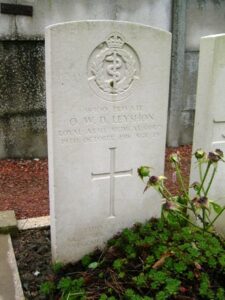
Jacob Dilwyn Llewellyn, Private, 125837, Machine Gun Corps. Jacob was the son of Mr. and Mrs. William Llewellyn, of Rhianfa, Garnant. Jacob had qualified with a B.A., 1st class honours in French before enlisting at Neath into the Royal Welsh Fusiliers. He subsequently transferred to the 19th Battalion, Machine Gun Corps, who were attached to the 19th (Western) Division, which had crossed to France 11-21 July 1915. It remained on the Western Front throughout the war. The Division fought at the Battle of Loos, and then moved to the Somme, where they took part in the second wave of the attack on Ovillers-La Boiselle on 1 July, capturing the village at heavy cost, and fought through the Somme Battles of Pozieres and the Ancre in 1916. They then moved North to Ypres, taking part in the Battle of Messines, and fought on the Menin Road and at Polygon Wood, before moving up to Broodseinde, Poelcapelle and Passchendaele Village itself. In 1918 they were caught up in the German Spring Offensive near St. Quentin, where they suffered terrible casualties, and fought at the Battle of Bapaume. They moved to Ypres, but were caught up in the German attack at Messines, and at Bailleul, and Kemmel. After suffering terribly again, they moved South to the quieter French sector to rebuild, but were caught up in the German offensive on the Aisne, and fought during the Battle of the Selle, where Jacob was killed in action on 21 October 1918. He was 30 years old, and is buried at Romeries Communal Cemetery Extension.
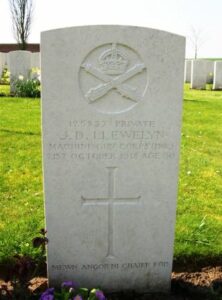
Edward Wynne Lloyd-Jones, MID, Captain, Royal Welsh Fusiliers. Edward was born on 13 April 1888, the son of Reverend David Lloyd-Jones, M.A., and Annie Lloyd-Jones, of Vronhaul, Llandinam. He was a cousin to David Davies, MP. Edward was educated at Edinburgh’s Merchiston Castle School and at Emmanuel College, Cambridge, before gaining a position with Roberts & Evans, Solicitors at Aberystwyth, and was studying for his final exams to become a barrister at Aberystwyth University. Edward was commissioned into the 1st/7th Battalion, Royal Welsh Fusiliers soon after the outbreak of war. The battalion was a Territorial unit, which mobilised for war at Newtown in August 1914, as part of North Wales Brigade, Welsh Division and moved to Conway until the end of the month, before moving to Northampton. In December the Division moved to Cambridge and then in May 1915 to Bedford, where the Division was numbered and the formation became 158 Brigade, 53rd (Welsh) Division. On 19 July 1915 the entire Division sailed from Devonport for Imbros and on 9 August 1915 landed at Suvla Bay. The infantry moved off the beaches into the bush, but due to a lack of maps and no knowledge of the terrain, many of the units became disorientated, and the situation became chaotic. Edward was killed in action near Sari Bair two days later, on 10 August 1915. The 27-year-old was originally buried at Sulajik No. 2 Cemetery, Gallipoli, but after the war his grave was exhumed, and he was re-interred in Green Hill Cemetery, Gallipoli. Edward was posthumously Mentioned in Despatches. His brother Ivor served with the same battalion, and was killed in 1917.
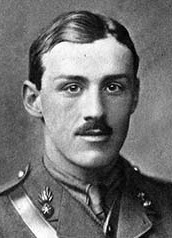
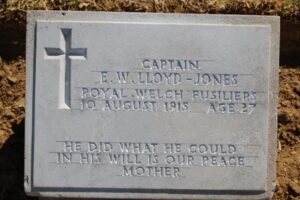
Harold Lloyd-Jones, Second Lieutenant, Royal Welsh Fusiliers. Harold was born at Cardiff in 1898, the son of Harry and Maggie Lloyd-Jones. The family resided at 7, Regency Street, Westminster. Harry was educated at Llandyfriog and at Aberystwyth University before becoming a solicitor in London. He was commissioned into the Royal Welsh Fusiliers in August 1917, but resigned his commission in April 1918 after being diagnosed with heart disease, and died in London on 1 July 1918, aged 19. His body was brought back by train for burial at Llandyfriog (St. Tyfriog) Churchyard.
Austin Theodore Long, Lieutenant, Royal Scots. Austin was born at Oakhill, Somerset, the son of Eustace Earl Long and Sarah Wakeford Long (nee Allen). He was educated at Bishop Stortford Grammar School, Aberystwyth and London Universities, before becoming a Schoolmaster at Market Drayton Grammar School, and then at Stramongate School, Kendal. He enlisted in December 1914 into the 10th Battalion, Royal Scots, which was a Territorial Cyclist Battalion, and was commissioned in February 1915 into the Royal Scots. Austin was posted to France with the 13th Battalion, Royal Scots. The battalion landed in France in July 1915 attached to 45 Brigade, 15th (Scottish) Division. The Division landed in France during July 1915, fought at Loos in September. In Spring 1916, the Division was involved in German gas attacks near Hulluch, and during July 1916 moved to the Somme, where they took part in the Battle of Pozieres, and then fought at Battle of Flers-Courcelette, where they captured Martinpuich. In October they fought at the Battle of Le Transloy, and also in the Attacks on the Butte de Warlencourt. During May 1917 the Division fought at the Battle of Arras, before moving to Ypres later that year. Here the Division took part in the Battle of Pilckem Ridge, and the Battle of Langemarck. Austin was by now serving as Temporary Captain. He was killed at Langemarck on 22 August 1917, aged 34, and is commemorated on the Tyne Cot Memorial, Belgium.

Idris Aneurin Morgan, Captain, South Wales Borderers. Idris was the son of Alfred Phillips Morgan and Alma Morgan, of Glyn-Gwy, Builth Wells. He was commissioned into the 11th Battalion, South Wales Borderers, which was attached to 115 Brigade, 38th (Welsh) Division. The Division had moved to France in December 1915, and the following year fought at Mametz Wood. In July 1917 the Division made its famous attack on Pilckem Ridge, before taking part in the ensuing Battle of Langemarck. The Division was posted to the Armentieres sector at the end of August 1917, remaining there until moving back to the Somme in April 1918. Prior to this, however, the 11th South Wales Borderers were disbanded, and Idris was posted to the 2nd Battalion, South Wales Borderers, which was attached to 87 Brigade, 29th Division. The Germans launched their Spring Offensive on the Somme on 21 March 1918, and weeks later launched a fresh assault on the Lys. The 29th Division was caught up in this, and over the coming days fought a desperate rearguard action. Idris was killed here on 17 April 1918. He was 28 years old, and is buried at Meteren Military Cemetery, France.
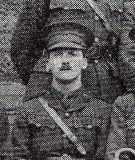
Thomas Llewelyn Morgan, B.A., Lance Corporal, G/25406, Buffs (East Kent Regiment). Thomas was the son of Evan and Barbara Morgan, of Pretoria, Llangeitho. The family had moved to 442, Edgware Road, Marylebone prior to the war, where they ran their own dairy business. Thomas enlisted there into the Buffs (East Ken Regiment, and was posted to France at sometime in 1917, joining the 1st Battalion, Buffs, which was attached to 16 Brigade, 6th Division. Thomas joined the battalion at Arras, where they fought at the Battle of Hill 70, and then during the Battle of Cambrai later in the year. In the spring of 1918 the Division was one of those hit by the German Offensive on the Somme, which had been launched on 21 March 1918, and the Division took part in the Battle of St Quentin. They were moved from the line, and went to Flanders to rest, but the following month the Germans launched another offensive on the Lys, and the Division fought during the Battle of Bailleul, the First Battle of Kemmel, and the Second Battle of Kemmel. The battalion was still in Flanders when Thomas was killed on 2 August 1918. He was 19 years old, and is buried at Lijssenthoek Military Cemetery, Belgium.
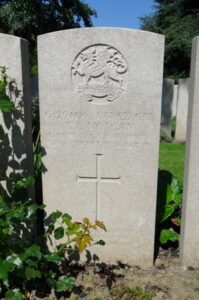
Noel Dyke Morris, Lieutenant, South Lancashire Regiment. Noel was the son of Thomas and Mary Ellen Morris, of Cefn Coed, Merthyr Tydfil. He was commissioned from the OTC on 9 September 1914, and in October 1915 was posted to France with the 8th Battalion, South Lancashire Regiment, which was attached to 75 Brigade, 25th Division. The Division landed in France on 26 September 1915, and was posted to the Vimy area, where it defended Vimy Ridge against a German attack in May 1916. Noel was wounded here, and was evacuated to the Base Hospital at Etaples, where he died on 12 May 1916. Noel was 22 years old, and is buried at Étaples Military Cemetery, France.
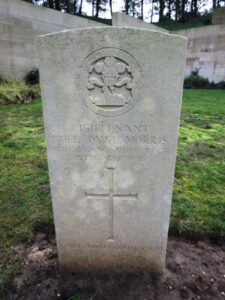
David Arthur Mort, Pioneer, 155373, Royal Engineers. David was born in 1896, the son of David and Kate Mort, of Llangyfelach, Morriston. He had originally enlisted at Aberystwyth into the Royal Welsh Fusiliers, but was later transferred to the 1st Battalion, Special Brigade, Royal Engineers, a gas warfare unit. David was badly wounded on the Somme in 1916, and was evacuated to the Military Hospital at Rouen, where he died on 1 July 1916, aged 19. David was buried at St. Sever Cemetery, Rouen, France.
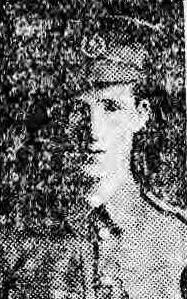
John Allen Nicholas, Captain, Royal Field Artillery. John was born in 1890, the son of Rhys and Jennie Nicholas, of Beili Glas, Cwmavon. He was educated at Christ’s Hospital School, Horsham and graduated from Aberystwyth before becoming a Master at Crediton Grammar School. John was commissioned into the 1st (Welsh) Howitzer Brigade, Royal Field Artillery on 29 August 1914. He embarked for the Middle East and joined the 4th (Welsh) Brigade, Royal Field Artillery on 22 November 1915. The Brigade served in Egypt with the 53rd (Welsh) Division, before being renumbered the 266th Brigade, Royal Field Artillery, and then took part in the offensive into Palestine from March 1917 onwards. John survived the campaign in Palestine and had attained the rank of Captain before the battery was disembodied and sent home. He was on his way home through France, after disembarking at Marseilles, when he became ill and died of pneumonia near Cherbourg on 28 January 1919. John was 28 years old, and is buried in Tourlaville Communal Cemetery and Extension, France.
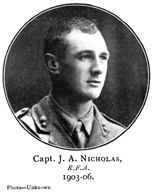
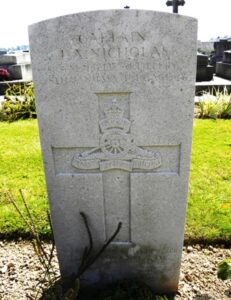
John Peate, Lieutenant, Gloucestershire Regiment. John was born at Llanbrynmair in 1889, the son of Margaret Peate of Ddolfach. He was educated at Machynlleth and Aberystwyth University, and was on the staff at Greenhill Grammar School, Tenby prior to the war. John married Ethel Gertrude Hicks at Tenby in 1915 and the couple lived at Marlborough House, South Cliff Street, Tenby. John was commissioned into the 3rd Battalion, Gloucestershire Regiment, and was posted into the 1st Battalion, Gloucestershire Regiment, which had been in France since the outbreak of war, attached to 3 Brigade, 1st Division. John joined the battalion in time to take part in the Somme Offensive on July 1916, probably arriving before the 1st Division moved to the Somme from Loos. By 5 July the 1st Gloucester’s had reached Bruay, and moved to billets in Albert by 11 July, prior to moving into the front line near Contalmaison. The 1st Division saw its first action on the Somme during the Battle of Bazentin soon afterwards, fighting to the right of the Australians as they assaulted Pozieres Ridge, and suffered terribly during the fighting around the OG lines. Heavy fighting, interspersed with rest periods, carried on over the coming weeks. By 7 September the 1st Gloucester’s moved into positions to carry on the offensive towards High Wood, and at dawn on the following morning launched their assault. Unfortunately the artillery support fell short, and many casualties were suffered from friendly fire. John was killed when the 1st Gloucester’s attacked High Wood on 8 September 1916. The 27-year-old has no known grave, and is commemorated on the Thiepval Memorial, France.
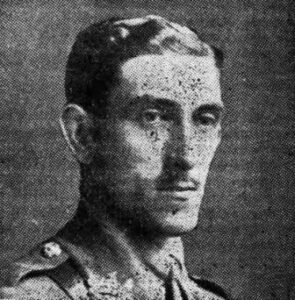
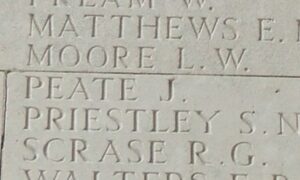
David James Phillips, Able Seaman, Z/1168, Royal Naval Volunteer Reserve. David was born on 17 December 1886, the son of Stephen and Mary Phillips, of Waterton Hall, Bridgend. After gaining his degree at Aberystwyth he became Assistant County Surveyor of West Suffolk. David enlisted into the Public Schools Battalion, Royal Fusiliers on 30 December 1914, before transferring to the Royal Naval Volunteer Reserve, and was posted to Hawke Battalion. The battalion landed at Gallipoli on 25 April 1915 attached to the Royal Naval Division, and remained there, in terrible conditions, for the remainder of the campaign. On 11 September 1915 David was asleep in a funk hole in the front line when he was accidentally shot by Able Seaman Kenny, who was cleaning his rifle. David was 28 years old, and was buried in a gully just off the communication trench leading to his battalions position. His grave was lost after the war, and David is commemorated on the Helles Memorial, Gallipoli.
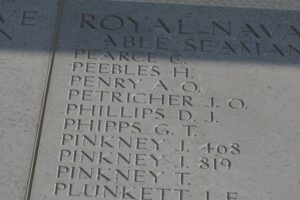
Albert Victor Porter, Private, 26398, Essex Regiment. Albert was the son of Samuel and Maria Porter, of Southend-on-Sea, and had enlisted into the 3rd Battalion, Essex Regiment, which was a Reserve Battalion. He died at the Dovercourt Military Hospital on 14 March 1916. Albert was 26 years old, and is buried at Southend-On-Sea (St. John the Baptist) Churchyard, England. His brother Ernest also fell.
Ernest James Porter, Lieutenant, London Regiment. Ernest was the son of Samuel and Maria Porter, of 14, Chancellor Road, Southend-on-Sea. He was a Master at Manchester Grammar School prior to the war, and was commissioned from the OTC in January 1916 into the 22nd Battalion, London Regiment, (The Queen’s), which was attached to 142 Brigade, 47th (2nd London) Division. The Division had been in France since March 1915, and had fought at Aubers, and at Festubert during May 1915. During September 1915 the Division fought at the Battle of Loos, remaining in positions north of Arras over the coming winter. Ernest joined the battalion here, and moved with it to the Somme, where they fought at the Battle of Flers-Courcelette, and then at the Battle of Le Transloy, where the Division captured Eaucourt l’Abbe. Ernest was taken prisoner by the Germans during the Somme battles, and died in captivity on 22 September 1916. He was 32 years old, and is buried at Porte-De-Paris Cemetery, Cambrai, France. His brother Albert also fell.
William John Pritchard, Private, 29579, Royal Welsh Fusiliers. William was the son of Owen and Anne Pritchard, of Bryn Dyffryn, Talysam, Penygroes, Carnarvonshire. He had been educated at Bangor and Aberystwyth prior to enlisting on 9 December 1915 into the Royal Welsh Fusiliers. William was posted to France on 18 June 1916, and was posted to the 10th Battalion, Royal Welsh Fusiliers, which was attached to 76 Brigade, 3rd Division. The division was on the Somme, preparing for its assault against Longueval and Delville Wood. William was killed at Longueval on 20 July 1916, during an action in which his battalion was awarded two Victoria Crosses. He was 20 years old and is buried in Delville Wood Cemetery, Longueval, France.
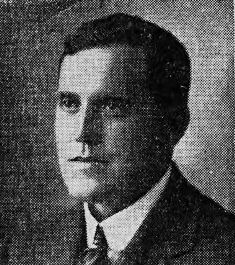
Benjamin Harold Rayner, Captain, North Staffordshire Regiment. Benjamin was born on 28 April 1886, the son of Alfred and Jane Rayner, of Wesley Place, Low Moor, Yorkshire. Prior to the war he resided with his wife, Elizabeth Rayner, at 92, Brackenbury Road, Preston. He was commissioned into the 1/5th Battalion, North Staffordshire Regiment, which was attached to 137 Brigade, 46th (North Midland) Division. The Division moved to France between 23 to 28 February 1915, and saw its first action at the Hohenzollern Redoubt near Loos. On 23 December 1915 the Division was ordered to proceed to Egypt, but after reaching Egypt, the move was countermanded and the units returned to France. Here the Division took part in the Attack on the Gommecourt Salient on 1 July 1916, suffering terrible casualties. The Division rested for several months at Arras, and at the end of 1916 took part in Operations on the Ancre. During March 1917 the Division followed the German Retreat to the Hindenburg Line, and then fought in the Battle of Arras, taking part in the Battle of Hill 70. Benjamin was killed in action at Arras on 14 June 1917. He was 31 years old, and is commemorated on the Arras Memorial, France.
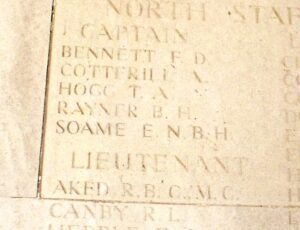
Charles Sydney Reed, Lieutenant, Monmouthshire Regiment. Charles was the son of Charles and Sarah Jane Reed, of Aberdare. After gaining his B.Sc. at Aberystwyth, Charles became a student at the Middle Temple, and resided at Bideford, Devon. He was commissioned into the 3rd Battalion, Monmouthshire Regiment, which landed in France on 14 February 1915, becoming attached to 83 Brigade, 28th Division. The battalion saw its first major action at the Second Battle of Ypres, and it was here that Charles was killed, on 8 May 1915, just prior to the battalion withdrawing to Vlamertinghe. He was 30 years old, and is commemorated on the Ypres (Menin Gate) Memorial, Belgium.
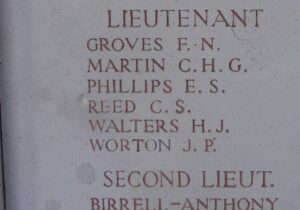
Morgan James Rees, M.D., Captain, Royal Army Medical Corps. Morgan was the son of John and Catherine Rees, of 1, Hannibal Road, Stepney Green, London. After being educated at Aberystwyth, he had qualified as a Doctor at Guy’s Hospital, and worked as Medical Inspector, Local Government Board prior to the war. Morgan was commissioned into the Royal Army Medical Corps, and served with the 132nd Field Ambulance, Royal Army Medical Corps. He was wounded on 22 September 1916 whilst attending to a wounded soldier, and was evacuated to the Military Hospital at Boulogne, where he died on 30 October 1916. Morgan was 41 years old, and is buried at Boulogne Eastern Cemetery, France.
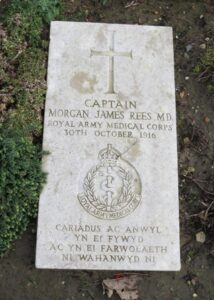
Thomas Henry Eaton Rees, Sergeant, 16172, Royal Welsh Fusiliers. Thomas was the son of Evan and Elizabeth Ann Rees, of 32, Convent Street, Waun Wen, Swansea. He enlisted at Cardiff into the 13th Battalion, Royal Welsh Fusiliers, which was attached to 113 Brigade, 38th (Welsh) Division. The Division had moved to France in December 1915, and the following year fought at Mametz Wood. In July 1917 the Division made its famous attack on Pilckem Ridge, before taking part in the ensuing Battle of Langemarck. The Division was posted to the Armentieres sector at the end of August 1917, remaining there until moving back to the Somme in April 1918. On 21 April 1918, 113 Brigade was tasked with the capture of the high ground overlooking the valley of the River Ancre. Thomas was killed in action here during the attack on Bouzincourt Ridge on 22 April 1918. He was 28 years old, and is commemorated on the Pozières Memorial, France.
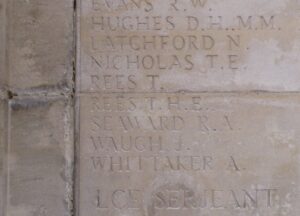
Tom Rees, Captain (Observer), Royal Flying Corps. Tom was the son of Thomas and Alice Rees, of Troedyrhiw Villa, Devynock, Brecon. He had been commissioned into the 14th Battalion, Royal Welsh Fusiliers, which was attached to 113 Brigade, 8th (Welsh) Division. Tom moved to France with the Division, but early in 1916 volunteered for service with the Royal Flying Corps. He became an observer with 11 Squadron, Royal Flying Corps, which was equipped with the F.E.2b. On 17 September 1916, Tom was acting as observer to Second Lieutenant Lionel Bertram Frank Morris, when their aircraft, F.E.2b, serial 7018, was spotted by a flight of six German fighters, led by the famous airman Oswald Boelcke. One of the German pilots was an inexperienced flyer, who had not yet shot down any enemy aircraft, and Boelcke allowed him to attack the inferior British aircraft. A spirited flight ensued, with Morris flying a desperate evasive action, while Tom steadily defended them by firing his Lewis Gun at the German. As Morris turned the aircraft away to head back to British lines, the German attacked again, firing bullets into the two men. He reported seeing Tom slump in his seat, and followed the stricken aircraft down to Flesquieres airfield, where Morris managed to land. Tom’s body was pulled from the aircraft, and Morris, badly wounded, was put into an ambulance which raced off to Cambrai. Morris died before the ambulance could reach Cambrai, and so he is buried at Port-De-Paris Cemetery, Cambrai. Tom was 21 years old, and is buried at Villers-Plouich Communal Cemetery, France. Both men had unknowingly just become the first victims of Baron Manfred von Richtofen, who was to become more famously known as the Red Baron. Richtofen would shoot down a further 79 aircraft, before being killed himself.
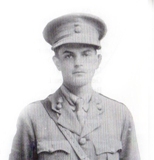
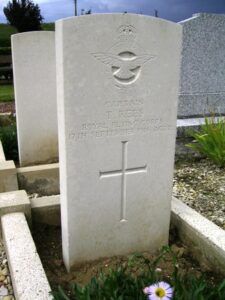
John Hywel Richards, MC, Lieutenant, South Wales Borderers. John was the son of the Reverend Benjamin F. and Annie Richards, of Francis Villa, Carmarthen. He studied as a Calvinistic Methodist Student at Aberystwyth and Carmarthen prior to the war, and in 1915 enlisted as a Private with the Army Veterinary Corps. He was commissioned into the 6th Battalion, South Wales Borderers in 1916, which was the Pioneer Battalion to the 25th Division. The Division fought throughout the Battle of the Somme, and then moved to Ploegsteert, where they held the line for the months leading up the Battle of Messines in June 1917. After fighting at Messines, the Division moved north, and fought at Pilckem, before moving south again, where they took up positions around Bullecourt in reserve. They moved north to Flanders on the night of 30 March 1918, where they took up positions at Ploegsteert again, where they received reinforcements, and rebuilt. John was awarded the Military Cross for Westhoek Ridge, during Third Ypres. The award was listed in the London Gazette of 8 January 1918, and read; ‘For conspicuous gallantry and devotion to duty when in charge of a convoy. He went forward during a hostile counter-attack and reconnoitred the ground to find the best route for the animals through both the barrage and shell-holes, under heavy shell fire, through which he then led them without hesitation, sustaining only a few casualties. He successfully delivered the stores and ammunition which were urgently required. He has on several occasions shown remarkable initiative and great gallantry during similar journeys.’ John was mortally wounded during the German Spring Offensive on the Lys on 11 April, and died of wounds on 19 April 1918, aged 27. He is buried at Aire Communal Cemetery, France.
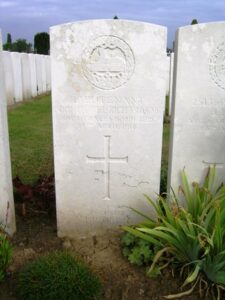
Thomas Roberts, Second Lieutenant, York and Lancaster Regiment. Thomas was the son of Thomas and Margaret Roberts, of Borthygest, Portmadoc. After studying for his degree at Aberystwyth, Thomas married Gwladys M. Morris, of Coetmor, Wrexham. Thomas was commissioned in 1917 into the 6th Battalion, York and Lancaster regiment, which was attached to 32 Brigade, 11th (Northern) Division. In June 1917 the Division took part in the Battle of Messines, and then fought at the Battle of Langemarck during the Third Battle of Ypres. At the end of September they fought at the Battle of the Polygon Wood, then at the Battle of Broodseinde and the Battle of Poelcapelle. The Division didn’t see any more major fighting for some months after the Passchendaele Offensive had been closed down, until fighting in August 1918 at the Battle of the Scarpe, during the Second Battles of Arras. The Allies were now in the ascendency, and began the great push that was to force the Germans into losing the war, and the Division fought at the Battle of Drocourt-Queant, then moved on, fighting at the Battle of the Canal du Nord, then at the Battle of Cambrai at the beginning of October. From here they took part in the Pursuit to the Selle, and the Battle of the Sambre. Thomas was wounded during the great advance, and was evacuated to Ficheux for treatment. He died there on 11 October 1918, aged 34, and is buried at Bucquoy Road Cemetery, Ficheux, France.
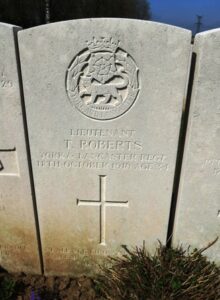
Tom Roberts, Lieutenant, Cheshire Regiment. Tom was the son of John Wells and Caroline Martha Roberts, of Swansea Road Nurseries, Llanelli. Tom was educated at Aberystwyth, and became a teacher in London prior to the war. He gained a commission into the 3rd Battalion, Cheshire Regiment, and was sent to France in March 1915, joining the 2nd Battalion, Cheshire Regiment at Ypres on 21 March. He was gassed during the Battle of Bellewaarde on 24 May 1915. Instead of remaining at the Aid Post, he returned to lead his men in the defence of a heavy German attack on their positions, and was shot in the chest and leg and killed that same day. Tom was 22 years old, and is buried at Bedford House Cemetery, Belgium. He left behind a rich legacy of information in letters which he had sent to his parents, describing his experiences during his short time at the front.
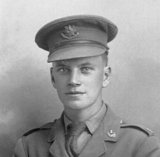
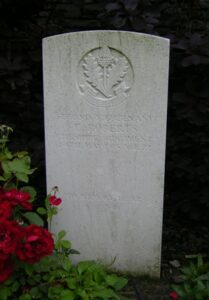
Francis Roderick B.A, Lieutenant, Welsh Regiment. Francis was the son of David and Elizabeth Roderick, of Cwmcerig Fach, Cefneithin. He was commissioned into the Welsh Regiment, serving as a Lieutenant in the 14th (Swansea) Battalion, which formed part of the 114th Brigade, 38th Welsh Division. Francis survived the Battalions massacre on the Somme, where the entire Welsh Division suffered terrible casualties at Mametz Wood, but he was with the Battalion when it was ordered to Ypres. At Ypres, the 38th Welsh Division took a major role in the capture of the Pilckem Ridge, where the famous poet Hedd Wyn was killed. Francis was seriously wounded, and died on 31 July 1917, aged 22. He is buried in Bard Cottage Cemetery, Belgium.
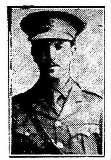
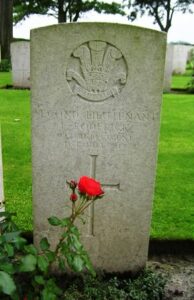
Edmund Stanley Rowlands, Pioneer, 159318, Royal Engineers. Edward was born at Crumlin in 1895, the son of Charles Rowlands. He enlisted at Aberystwyth into the 3rd Battalion, South Wales Borderers. At some time later he was posted to the 3rd Provision Company, Royal Engineers, serving with them in France. Edward was probably wounded during the opening of the Somme Offensive in July 1916, and returned to England for treatment. He died of wounds on 19 August 1916, aged 21, and is buried at Penmaen Congregational Chapelyard.
Charles Gordon Rumsey, Lieutenant, South Wales Borderers. Charles was born in 1892, the son of Walter Parry Rumsey and Annie M. Rumsey, of Danygarth House, Aberbeeg, Monmouth. He was commissioned straight from university on 15 August 1914 into the 3rd Battalion, South Wales Borderers, and was posted to France with the 1st Battalion, Welsh Regiment. The battalion landed in France on 18 January 1915 attached to 84 Brigade, 28th Division, moving to positions near Ypres. It saw its first major action during the Second Battle of Ypres that year, during heavy fighting at Hill 60. Charles was promoted Lieutenant on 1 May 1915. On 25 May 1915 the 1st Welsh made a gallant attack on the German positions at Bellewaarde Ridge, and Charles was last seen heading a group of men who charged up the ridge into Railway Wood. Charles is one of six officers and 123 men of the 1st Welsh who were killed that day. He was 23 years old, and is commemorated on the Ypres (Menin Gate) Memorial, Belgium.
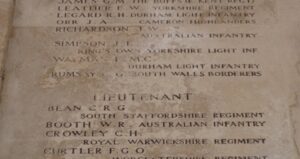
Ewart Gladstone Salathiel, Second Lieutenant, South Wales Borderers. Ewart was born at Newport in 1889, the son of Philip and Justina Salathiel. He had been a keen sportsman at Aberystwyth, playing tennis and football. At the outbreak of war, on 9 October 1914 Ewart was commissioned into the 4th Battalion, South Wales Borderers, which was attached to 40 Brigade, 13th (Western) Division. The Division had fought at Gallipoli in 1915, before being evacuated to Egypt. On 12 February 1916 the Division began to move to Mesopotamia, to strengthen the force being assembled for the relief of the besieged garrison at Kut al Amara. Ewart’s medal card shows he arrived in Egypt on 22 April 1916. He then looks to have been sent to France, and was attached to the 11th Battalion, South Wales Borderers, which was attached to 115 Brigade, 38th (Welsh) Division. Ewart was wounded during the attack of 115 Brigade on Mametz Wood on 7 July 1916. He returned home for treatment, dying in Hospital at London on 17 July 1916. He was 27 years old, and is buried at Rogerstone (Bethesda) Baptist Chapelyard.
William Henry Sutton, Lieutenant, Welsh Regiment. William was born at Blaina in 1892, the only son of John and Mary Sutton, of Blaina, Newport, Monmouth. After gaining his B.A. (Honours), William became Senior French Master at Kettering Grammar School. He enlisted into the 28th Battalion, London Regiment (Artists Rifles) OTC, and was commissioned into the Welsh Regiment. William was posted to France in 1916, joining the 2nd Battalion, Welsh Regiment, which was attached to 3 Brigade, 1st Division. William probably joined the battalion during the Somme offensive in 1916, and would have fought at Third Ypres the following year. The Division was were near Estaires when the German Spring Offensive caught them in April 1918, and fought a defensive action in the coming days, before being moved South again to Arras, fighting at the Battle of Drocourt-Queant, and at the Battle of Epehy, after the tide had been turned in the favour of the Allies. The Division pushed on towards the St. Quentin Canal, and after crossing the Hindenburg Line fought at the Battles of Beaurevoir, the Selle and the Sambre. On 23 October 1918, the 2nd Welsh were tasked with an assault on Landrecies, near the Forest of Mormal. William was killed during the resulting fighting that day. He was 23 years old, and is buried at Vaux-Andigny British Cemetery, France.
Ivan Arthur Lloyd Thomas, Second Lieutenant, Machine Gun Corps. Ivan was born at Llangadog, Carmarthenshire on 14 January 1887, the son of Enoch and Mariah Thomas. The family later resided at Bronllys, near, Newcastle Emlyn. Ivan was educated at Aberystwyth University and served for three years with the University OTC before becoming a teacher in Canada prior to the war. He enlisted at Montreal on 16 September 1915 into the Canadian Expeditionary Force and soon after arriving in England was commissioned on 25 October 1916 into the Machine Gun Corps. Ivan was posted to their 142nd Company, which was attached to the 47th (2nd London) Division. The Division was north of Arras when the Germans attacked Vimy Ridge, and then moved south to the Somme, where they fought at the Battle of Flers-Courcelette, and then at the Battle of Le Transloy, where the Division captured Eaucourt l’Abbe, and took part in Attacks on the Butte de Warlencourt. Early in 1917 the Division moved north to Belgium. Ivan was killed in action at Ypres on 10 May 1917. He was 30 years old, and is buried at Bedford House Cemetery, Belgium.
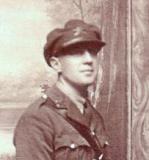
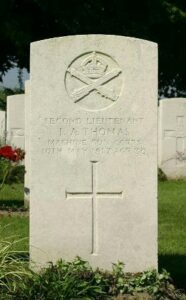
Thomas Thomas, Captain, Welsh Regiment. Thomas was originally from Cardigan, the son of John and Mary Ann Thomas. The family later resided at Stradey House, Llwynhendy, Llanelly. Thomas was in University at Aberystwyth when he was commissioned into the 13th Battalion, Welsh Regiment, the 2nd Rhondda Battalion. The battalion was raised in August 1914, becoming attached to 114 Brigade, 38th (Welsh) Division the following year. In December 1915 the Division moved to France, and took the line near Fleurbaix, where it was initiated into trench warfare. In June 1916 the Division marched south to the Somme, where it took part in the famous capture of Mametz Wood between 7 to 11 July. It was then moved north, to positions on the Canal Bank at Boesinghe, where it remained for the next twelve months. On 31 July 1917 the Division launched an attack on the Pilckem Ridge, capturing their objectives, with heavy loss of life. After a brief rest, the 13th Welsh moved back into the line on the Steenbeek, and it was here, on 23 August 1917, that Thomas was killed by German shellfire. He was 24 years old, and is buried at Bard Cottage Cemetery, Belgium.
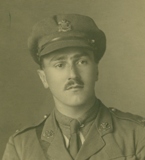
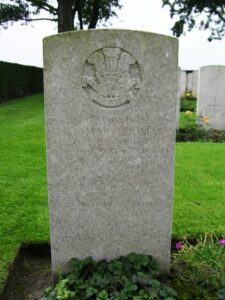
John David Vaughan, MC, Second Lieutenant, Welsh Regiment. John was the son of Henry and Rachel Vaughan, of 44, Mansel Street, Burry Port. He served with the 14th Battalion, Welsh Regiment, attached to 114 Brigade, 38th (Welsh) Division. The Division had landed in France during December 1915 and had spent their first winter in the trenches near Armentieres. In June they marched south to the Somme, where they famously captured Mametz Wood. The Division suffered terrible casualties at Mametz, and were taken out of the line, and moved to Ypres to rebuild. John was wounded here, and sadly died of wounds on 18 March 1917, aged 30. He is buried at Ferme-Olivier Cemetery, Belgium. John had been awarded the Military Cross for ‘For conspicuous gallantry in action. He carried out a daring reconnaissance with great courage and determination, obtaining most valuable information.’ His award was gazetted on 9 January 1917.
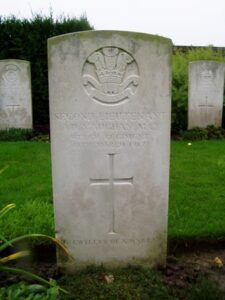
David John George Watkins, Lieutenant, South Wales Borderers. David was the son of David and Edith Watkins, of 6, Oak Street, Cwmbran. He had originally enlisted into the ranks of the Royal Welsh Fusiliers, but was commissioned into the 1st Battalion, South Wales Borderers. The battalion was in France attached to 3 Brigade, 1st Division. The Division had been one of the first to arrive in France, fighting at the Battle of Mons, and the retreat to the Marne. It had fought at the First Battle of Ypres that year, and in 1915 fought at the Battle of Aubers, and the Battle of Loos. In 1916 the Division moved south to the Somme, and fought here throughout the Somme Offensive. They followed the German retreat to the Hindenburg Line in early 1917, and moved to the Flanders Coast during the summer of 1917. After the Third Battle of Ypres had stalled in the mire, the Division was recalled to Ypres, and fought at the Second Battle of Passchendaele. After spending another Winter in Flanders, they were near Estaires when the German Spring Offensive caught them, fighting through the Battles of Estaires, Hazebrouck, and Bethune. David died near Bethune on 21 April 1918. He was 21 years old, and is buried at Fouquieres Churchyard Extension, France.
Thomas Whiting, Captain, King’s Liverpool Regiment. Thomas was the son of Mrs F Whiting, of 22, Westwell Road, Streatham Common. He served with the Territorial Army prior to the war, and on 27 November 1914 was gazetted as Captain with the 20th Battalion, King’s Liverpool Regiment (Liverpool Pals). The battalion formed in Liverpool on 16 October 1914 by Lord Derby, in the old watch factory at Prescot, becoming attached to 89 Brigade, 30th Division. The Division landed at Boulogne in November 1915, and moved to positions on the Somme. The Liverpool Pals first battle came on the opening day of the Somme Offensive, on 1 July 1916, when the Division attacked towards Montauban. Meeting limited opposition, the Pals completed their objectives with comparatively minimal casualties. The Division remained on the Somme over the coming weeks, taking part in the efforts to capture the village of Guillemont. Thomas was killed in action here during the attack on Falfemont Farm on 30 July 1916. He has no known grave, and is commemorated on the Thiepval Memorial, France.
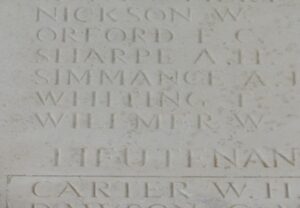
Edwin Gordon Williams, Second Lieutenant, Royal Welsh Fusiliers. Edwin was the son of William and Elizabeth Williams, of Abertillery. He was commissioned into the Royal Welsh Fusiliers, and was posted to France with the 10th Battalion, Royal Welsh Fusiliers. The battalion had formed at Wrexham on 16 October 1914, attached to 76 Brigade, 25th Division, and landed at Boulogne on 27 September 1915. On 15 October 1915 the battalion transferred with 76 Brigade to the 3rd Division. Early in 1916 the Division fought at the Actions of the Bluff, and at the St Eloi Craters. It then moved south to the Somme, and fought there at the Battle of Albert, and the Battle of Bazentin, capturing Longueval. The Division took part in the Battle of Delville Wood, and the Battle of the Ancre, before settling into a bleak winter in France. In May 1917 the Division was at Arras, and fought at the First Battle of the Scarpe. Edwin was badly wounded at Arras, and was evacuated to hospital at Etaples, where he died on 13 May 1917. he was 23 years old, and is buried at Étaples Military Cemetery, France.
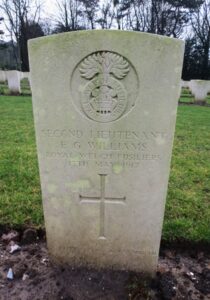
Gwilym Williams, Second Lieutenant, Royal Welsh Fusiliers. Gwilym was born on 18 March 1890, the son of William and Esther Williams, of Nantyraf, Mydrim. He was educated at Carmarthen Grammar School and at Aberystwyth University before becoming assistant Master at Queen Mary’s Grammar School, Walsall. In August 1915 Gwilym was commissioned into the 17th Battalion, Royal Welsh Fusiliers. The battalion moved to France during December 1915 attached to 115 Brigade, 38th (Welsh) Division, and took up positions around Fleurbaix, to gain experience. The Division arrived in France in December 1915, and were posted near Armentieres, where they were familiarised with trench warfare. Gwilym joined the battalion at Fauquissart on 24 April 1916. He was in the front line on 20 May 1916 when he was wounded by a German rifle grenade, and was brought to the Hospital at Merville, where he died the following day, on 21 May 1916. Gwilym was 26 years old, and is buried at Merville Communal Cemetery, France. He was a well known Bard, having won four Bardic chairs.
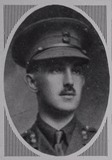
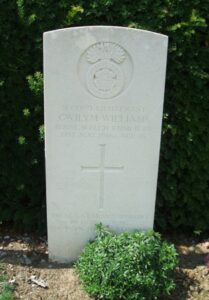
Ivor Abraham Williams, Pioneer, 224967, Royal Engineers. Ivor was born in 1896, the son of John and Mary Ann Williams, of 71, Cymmer Road, Porth. Ivor qualified as a Chemist at Aberystwyth, and enlisted there on 15 March 1917 into the Royal Engineers. Ivor was posted to France with N Special Brigade, Royal Engineers, on 26 April 1917 as an army chemist. He was wounded in France on 7 May 1918, after being shot in the head and back, and was evacuated via No 47 General Hospital in France back to England, where he was hospitalised at the Monastery at Nuneaton for specialist treatment. Ivor was then sent to the 3rd Western General Hospital at Cardiff, where he died of his wounds in hospital on 12 June 1918. He was 21 years old, and was buried by his father, who was an undertaker, at Rhondda (Trealaw) Cemetery.
Rodric Mathafarn Williams, Captain, Royal Flying Corps. Rodric was the son of Dr. Richard Williams, of Pen-Bre, Bangor, and Elizabeth Williams, of Trenton Lodge, Stoney Gate Road, Leicester. Rodric had originally enlisted into the Royal Welsh Fusiliers at the outbreak of war, and was later commissioned into the 17th Battalion, Royal Welsh Fusiliers. He then volunteered to train as a pilot, joining 2 Squadron, Royal Flying Corps. At 16.00 on 12 August 1917, Rodric left Droglandt aerodrome on a Ground Patrol, flying D.H.5, serial A9398, of 32 Squadron. He was last seen at 17:20 at 5,000 feet over Houthulst Forest, where he was shot down by Leutnant J. Schmidt, of Jasta 3. Rodric was 23 years old when he was killed that day. He has no known grave, and is commemorated on the Arras Flying Services Memorial, France.
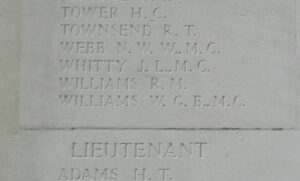
Philip Mortlock Young, MID, Lieutenant, King’s Liverpool Regiment. Philip was the son of William and Abbie Jane Young, of Elim, Westbere, Canterbury. He was commissioned into the 3rd Battalion, King’s Liverpool Regiment, and was posted to France at the outbreak of war with the 1st Battalion, King’s Liverpool Regiment, which was attached to 6 Brigade, 2nd Division. The Division fought at the Battle of Mons, and retreating southwards, fought at the Affair of Landrecies, the Rearguard Actions of Villers-Cotterets, and at the Battle of the Marne where the German offensive was stopped. The Germans retreated north, and the BEF met them, fighting at the Battle of the Aisne. The 2nd Division was then moved to Flanders, where it fought at the First Battle of Ypres, remaining there throughout the first winter of the war. In 1915 they took part in the Battle of Festubert, and it was there, on 10 March 1915, that Philip was killed. He was 23 years old, and is commemorated on the Le Touret Memorial, Richebourg L’Avoue, France. The photograph of Philip is courtesy of Declan Vosser, of Aberystwyth University.
